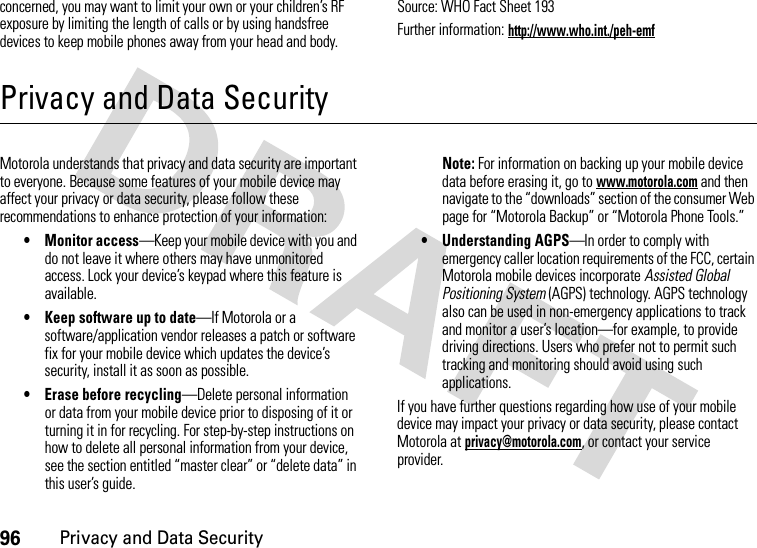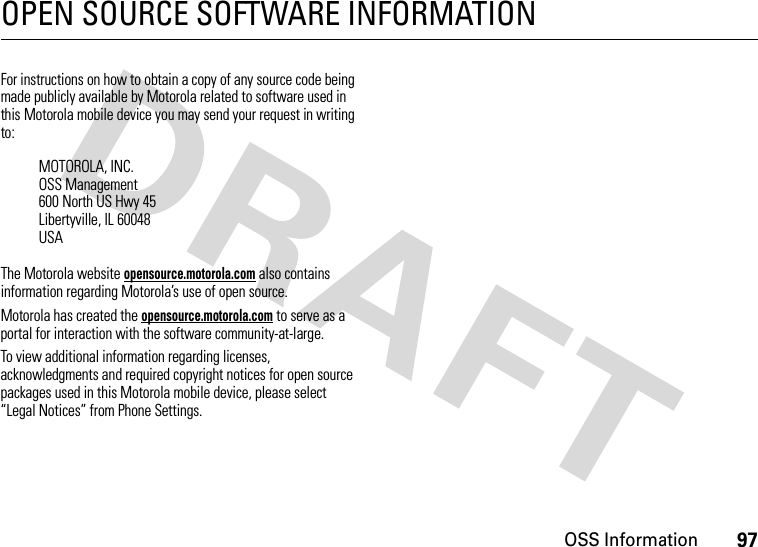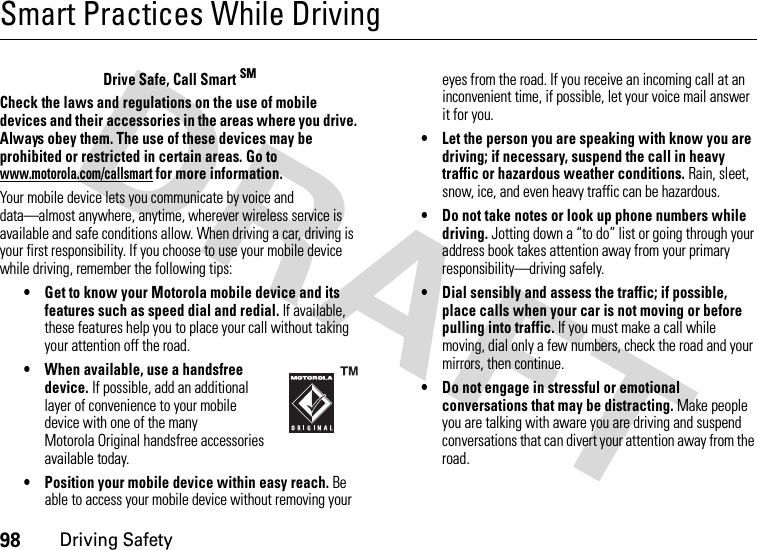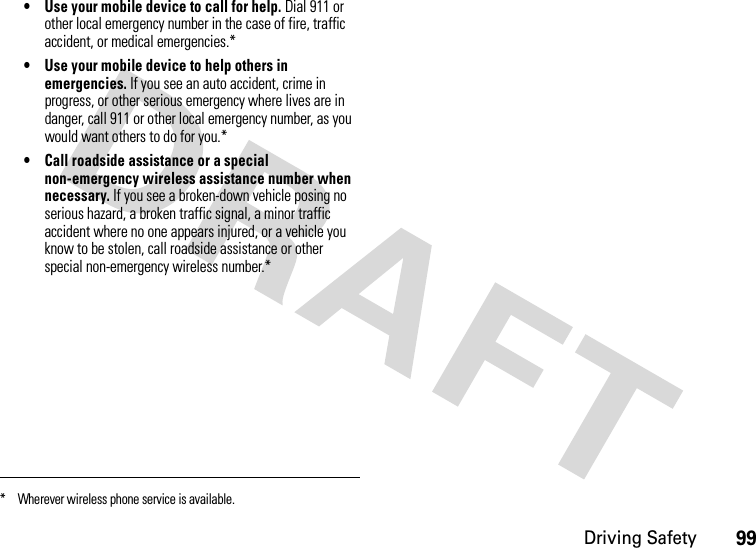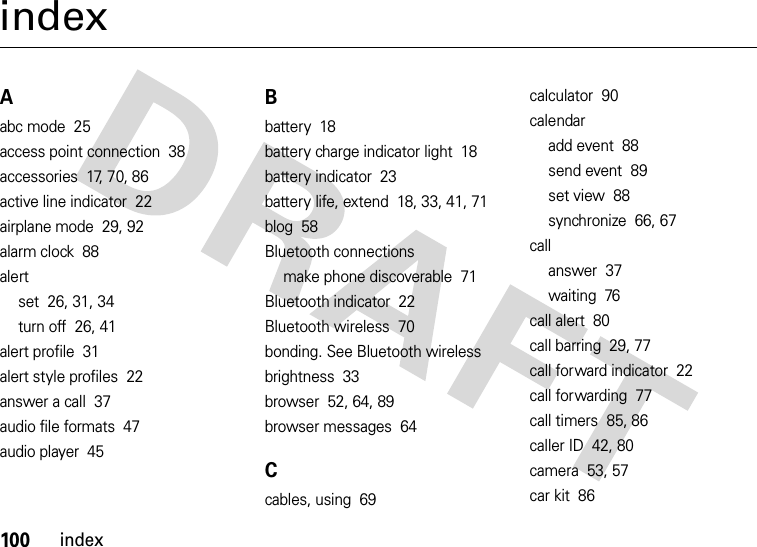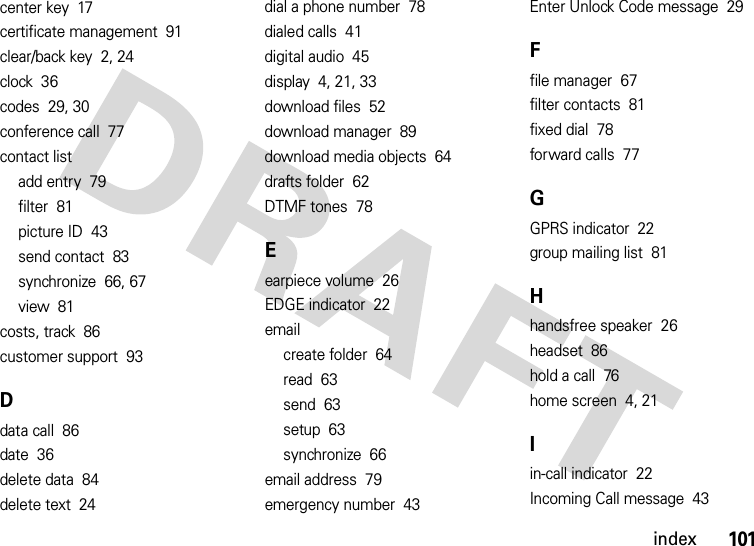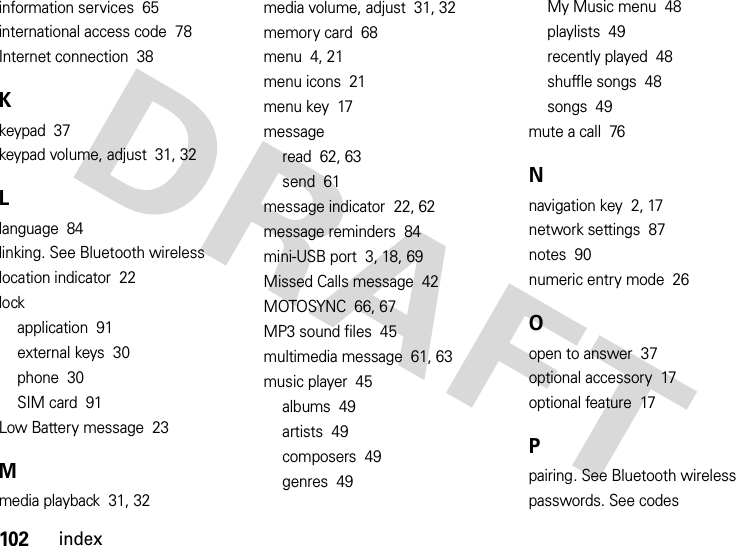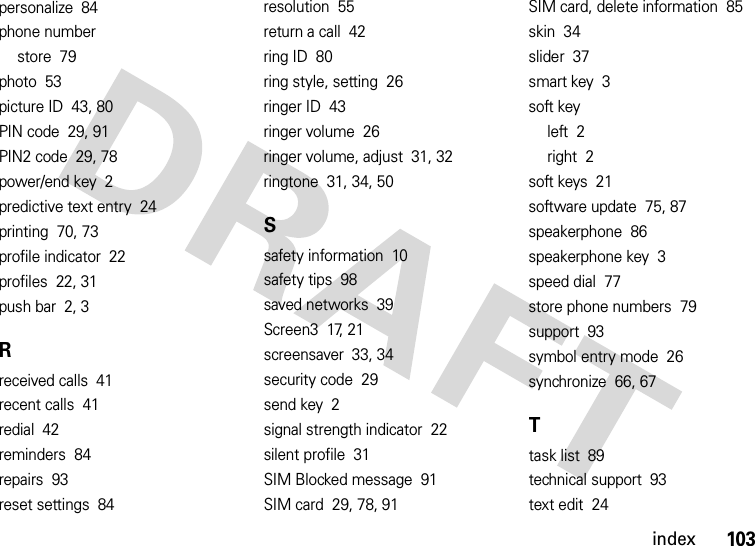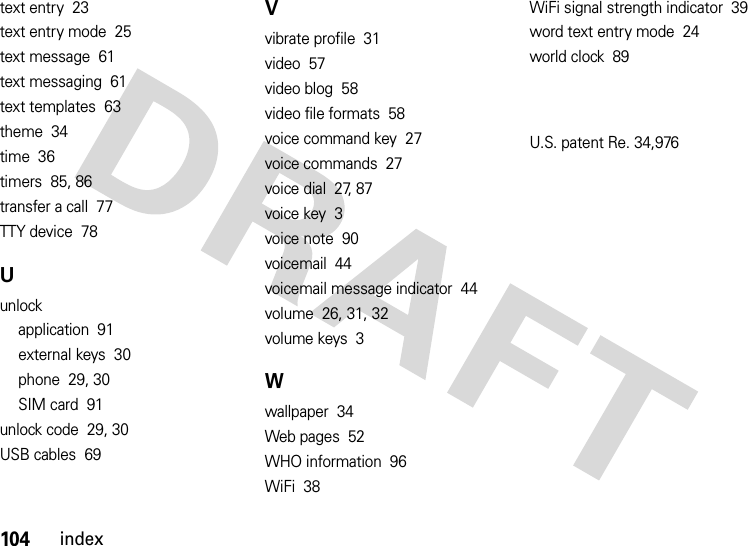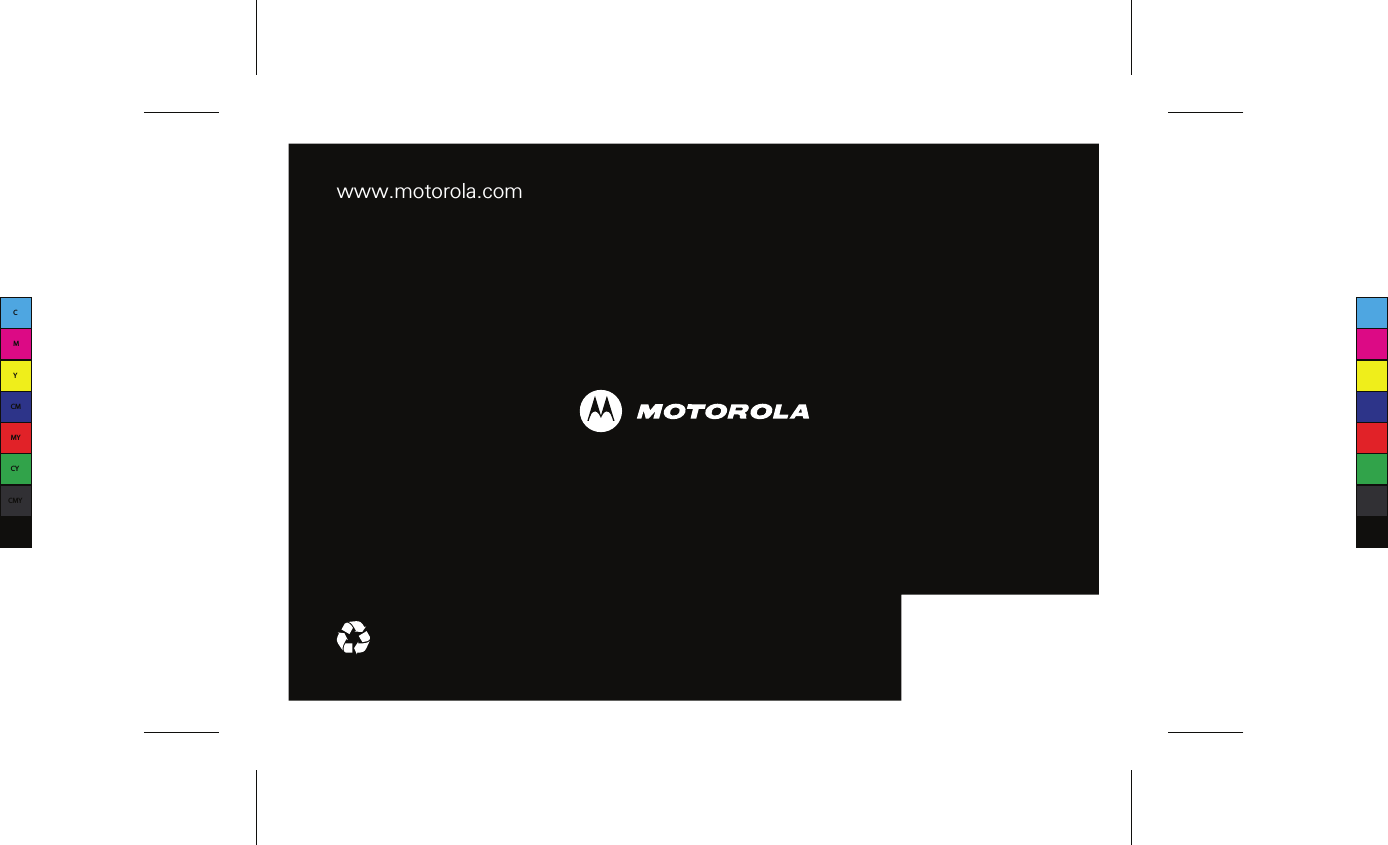Motorola Mobility P56HH2 GSM Transceiver with WLAN and Bluetooth User Manual
Motorola Mobility LLC GSM Transceiver with WLAN and Bluetooth
Contents
- 1. Exhibit 8 Users Manual
- 2. Exhibit 8 Revised Users Manual RESPONSE TO CRN34712
Exhibit 8 Users Manual
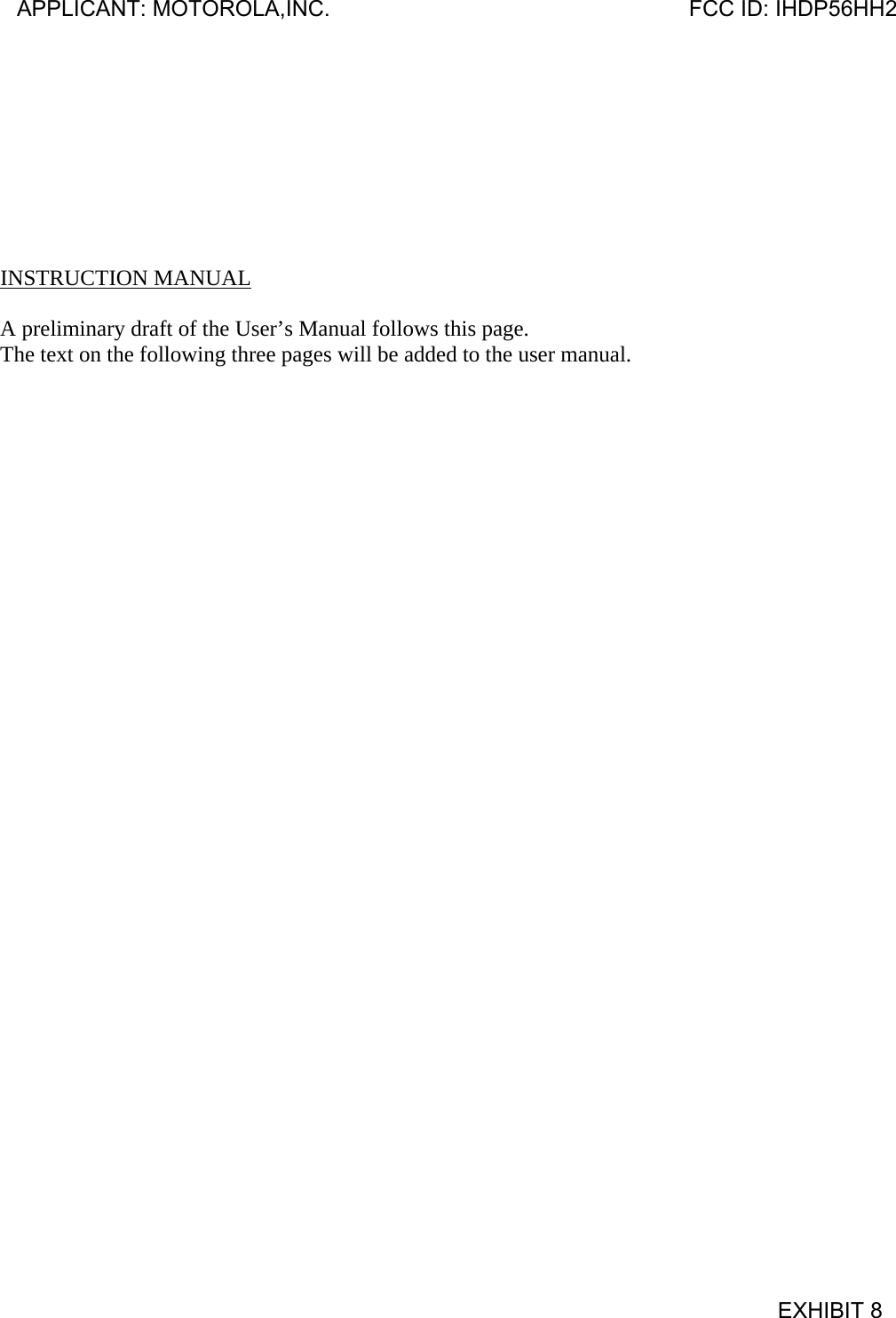
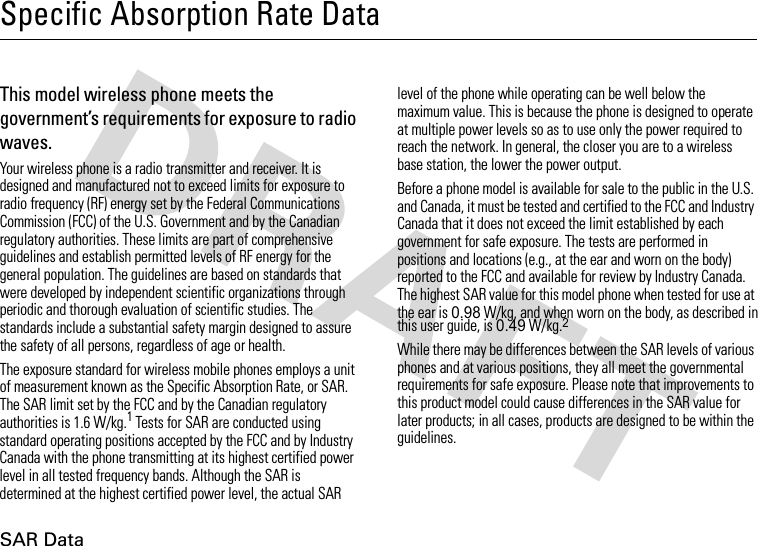
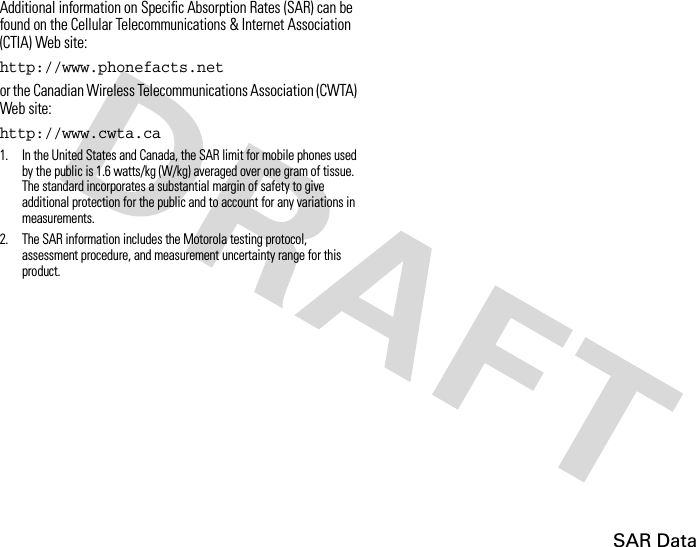
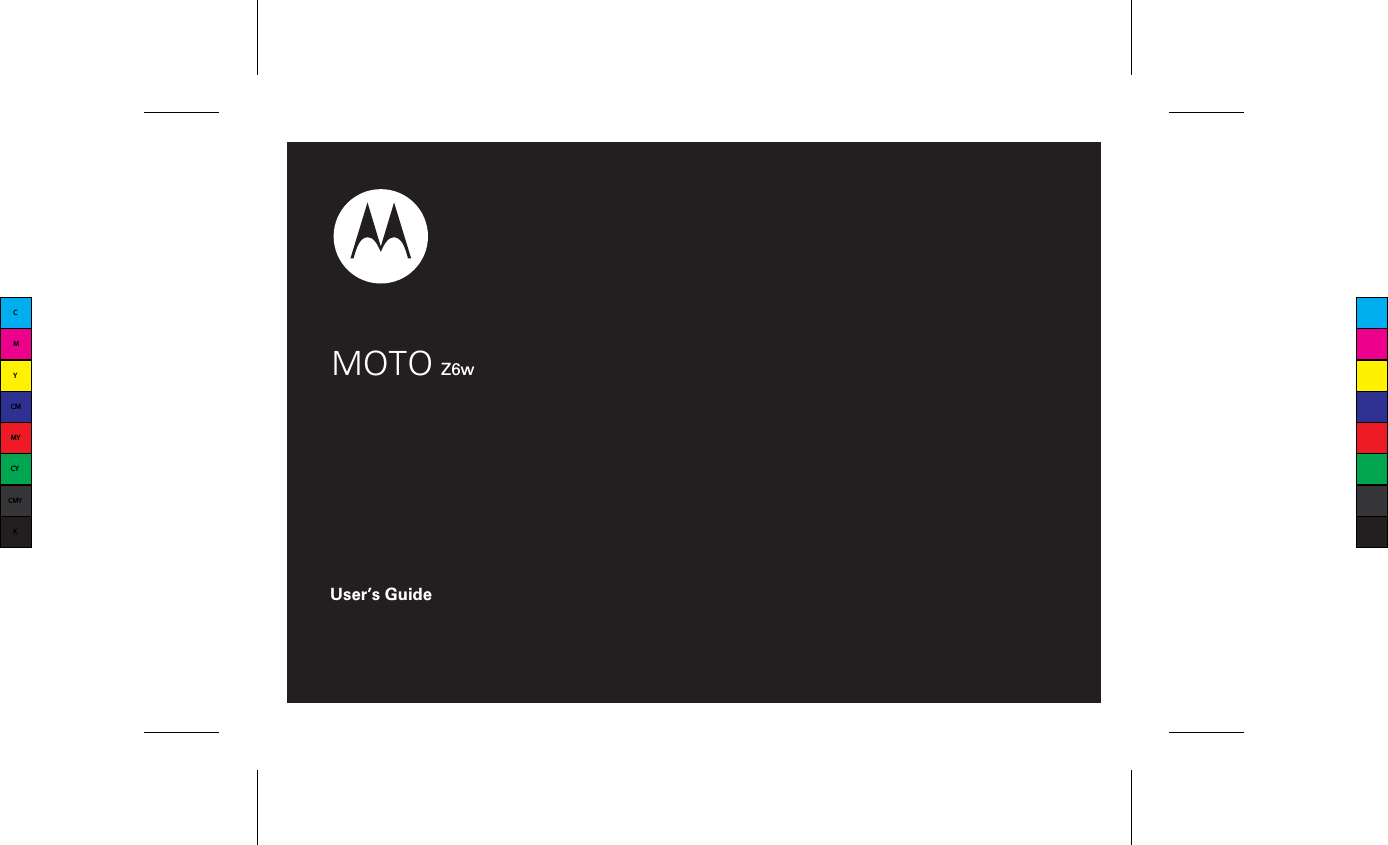
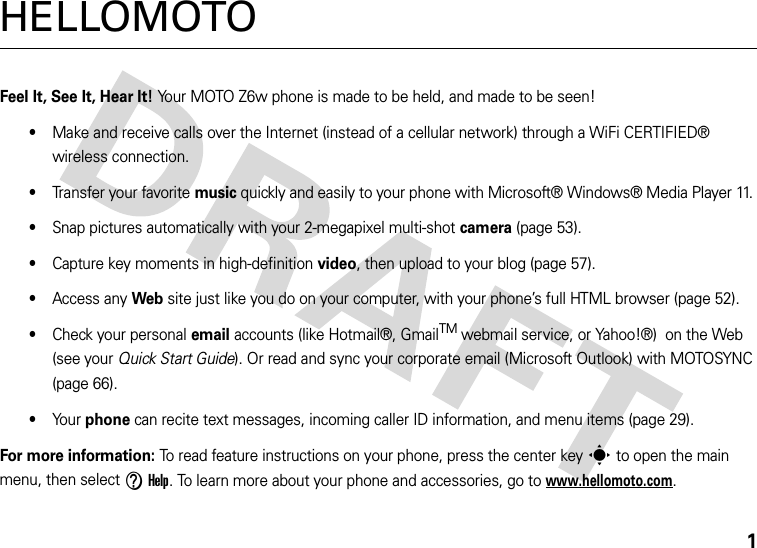
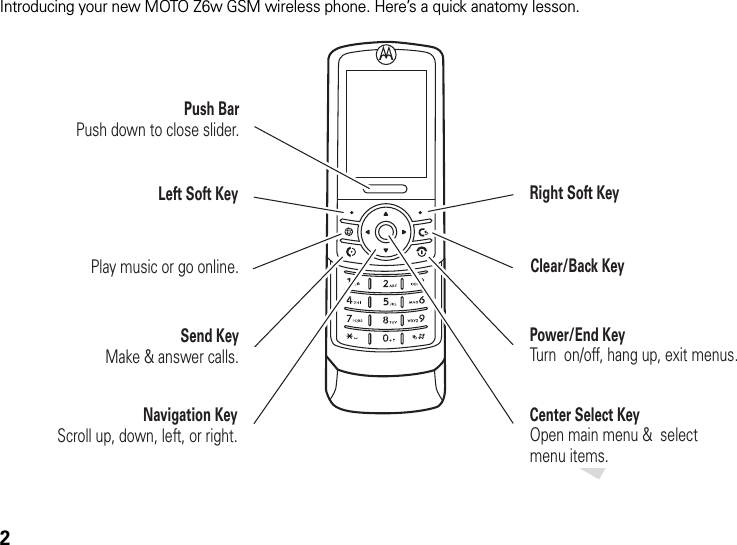
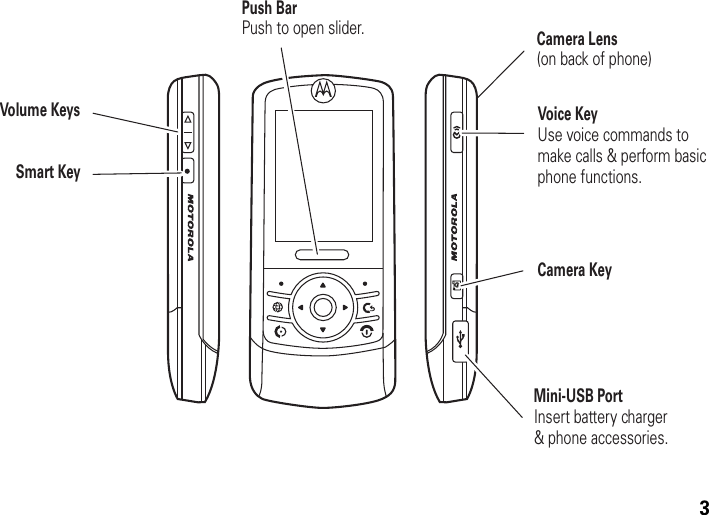
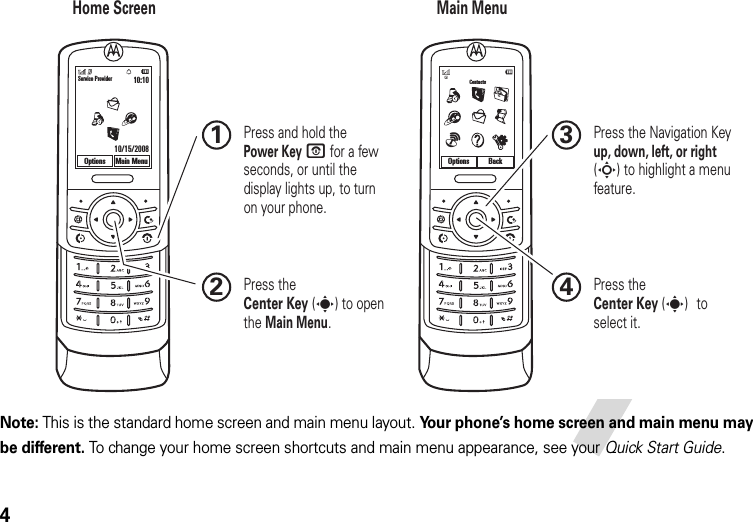
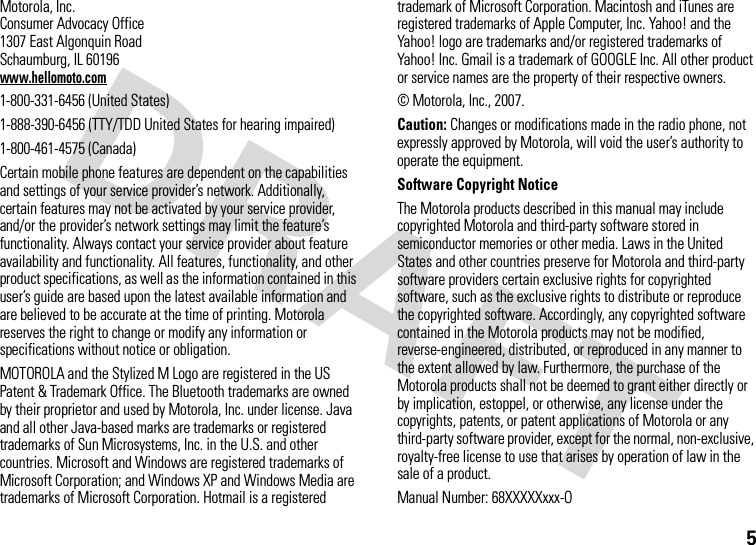
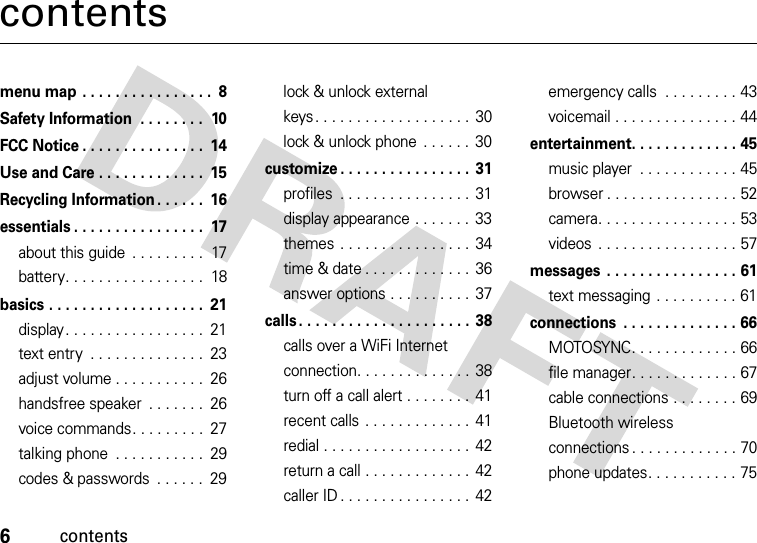
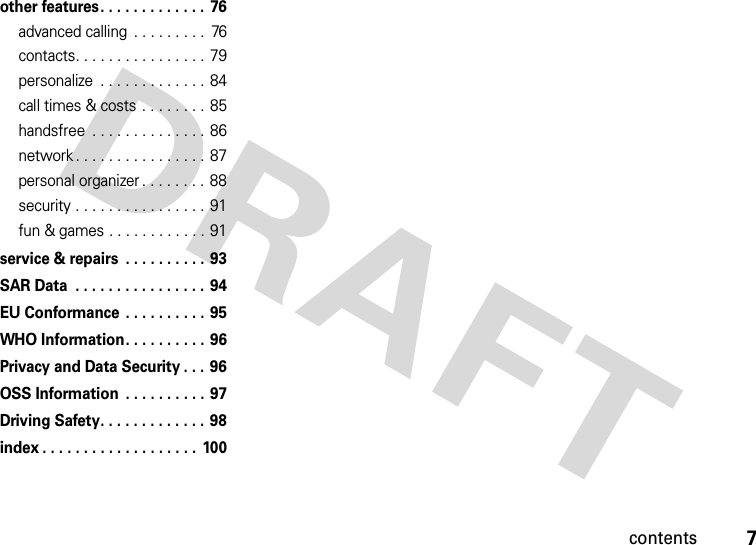
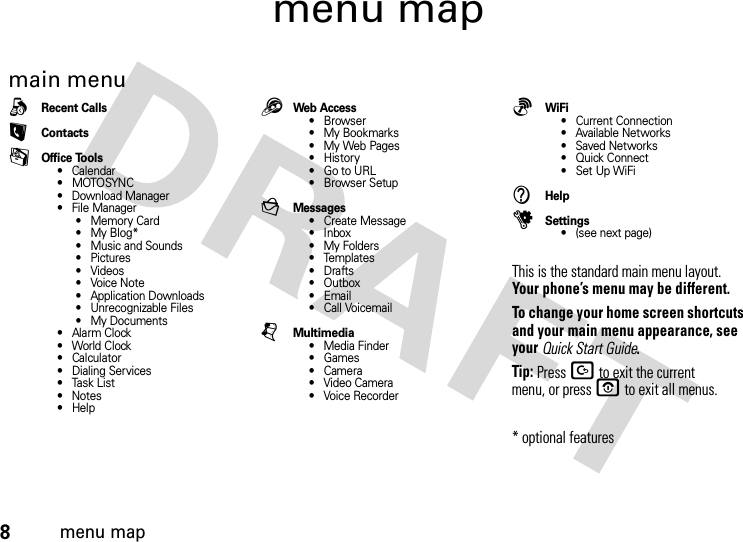
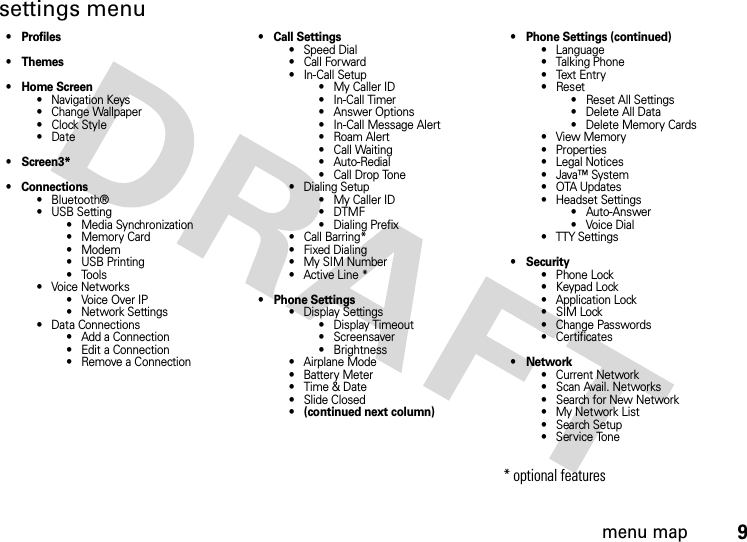
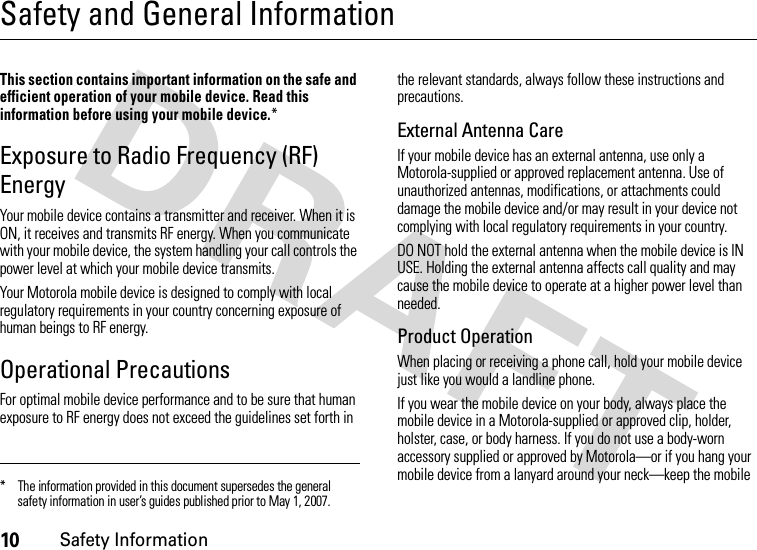
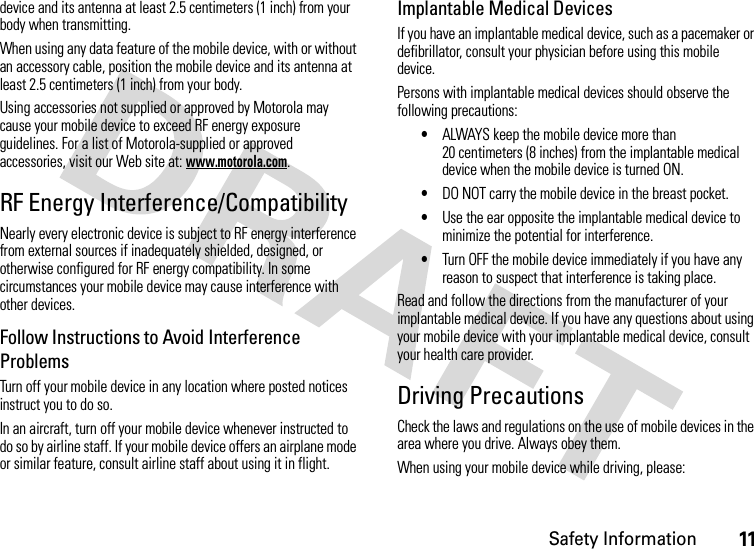
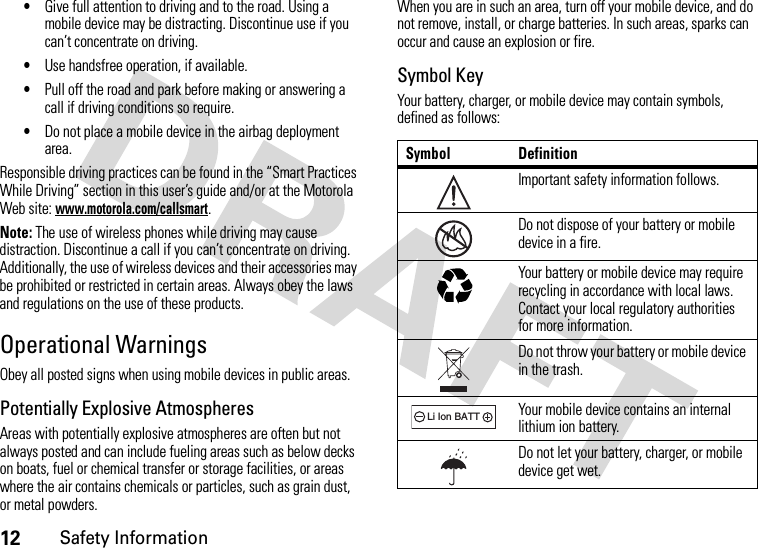
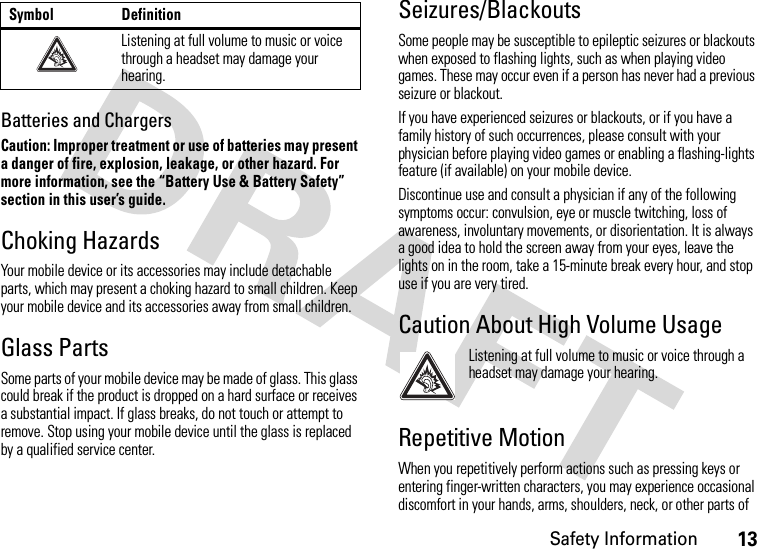
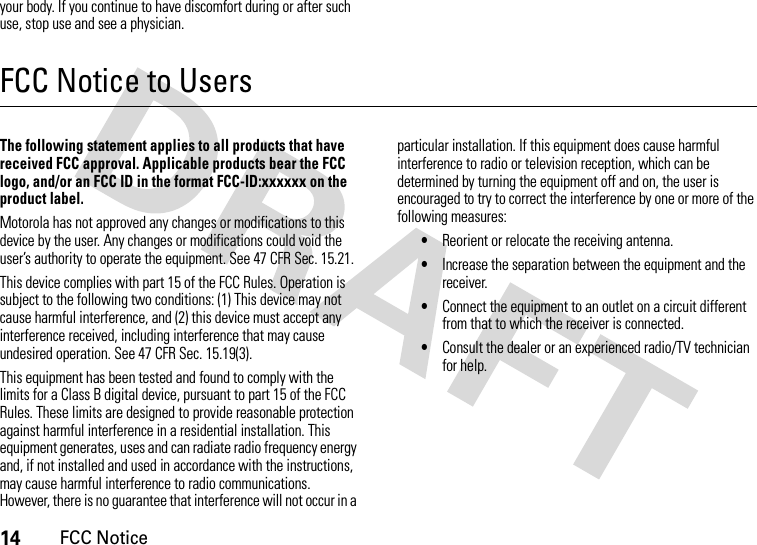
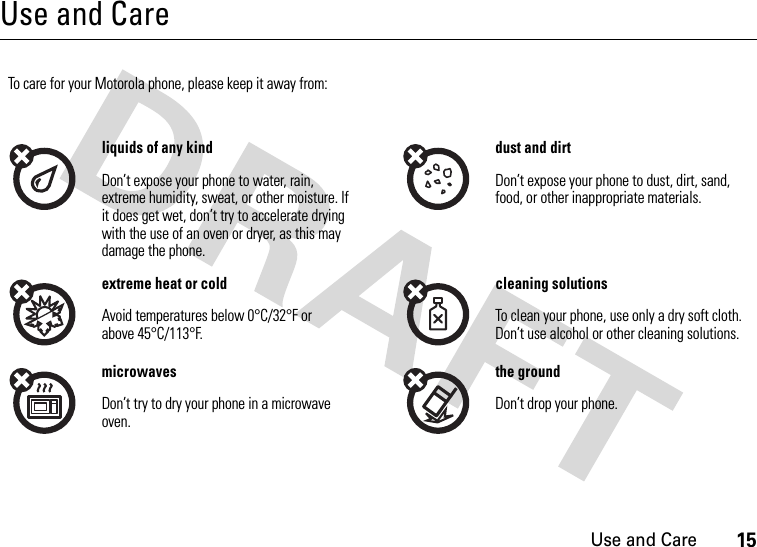
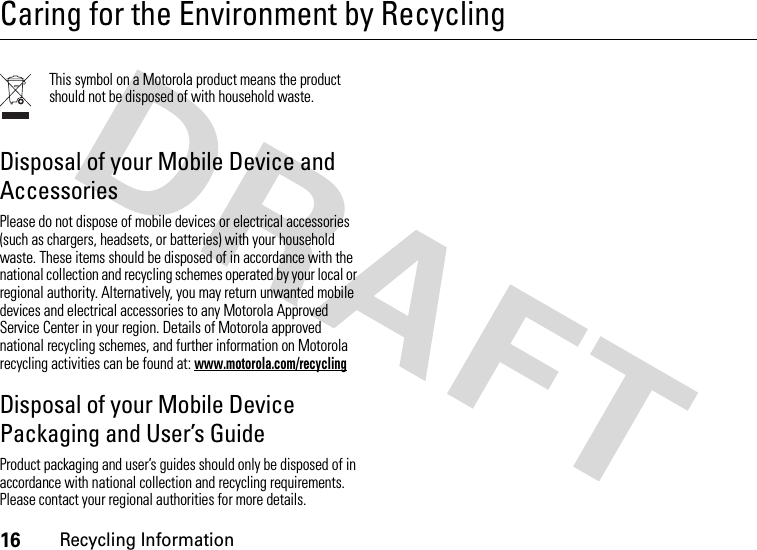
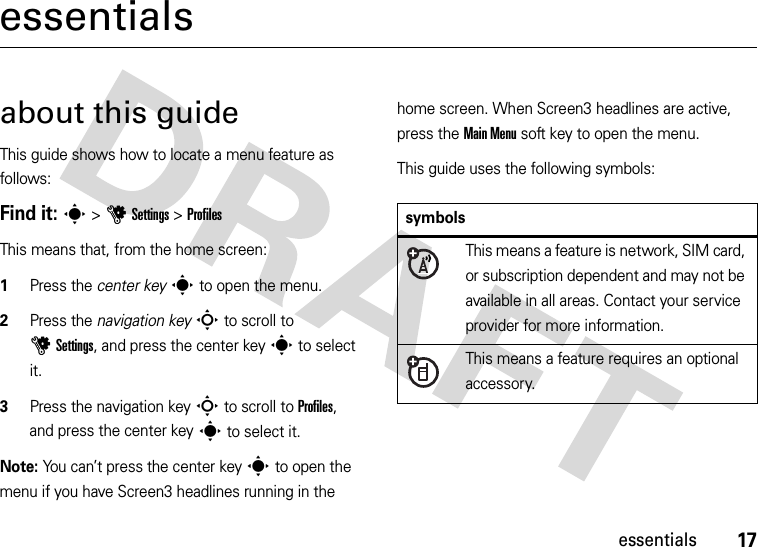
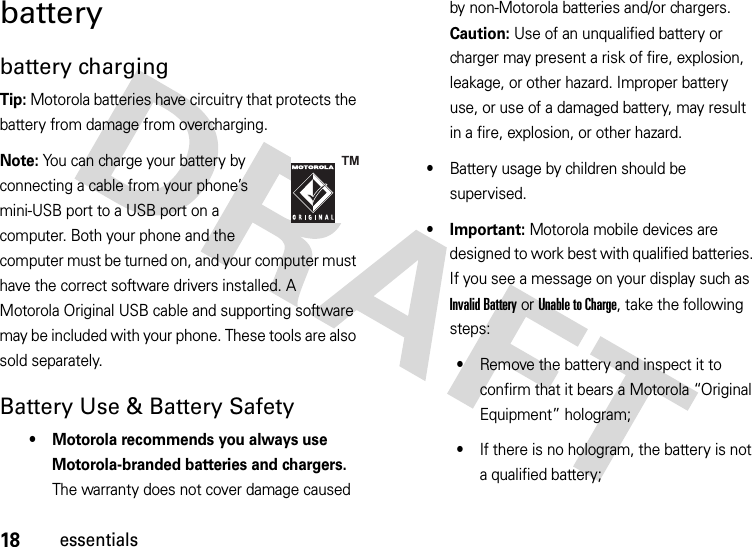
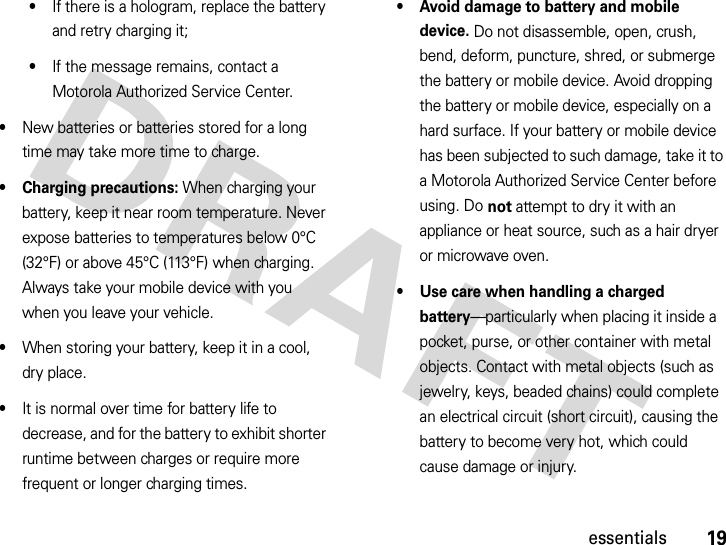
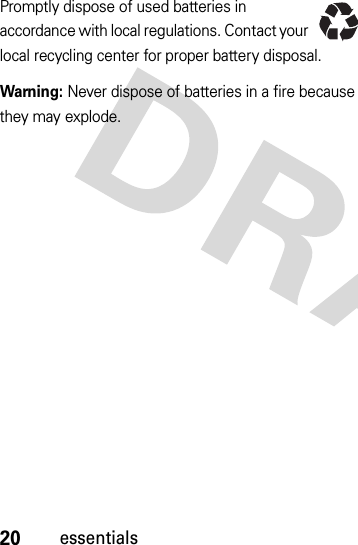
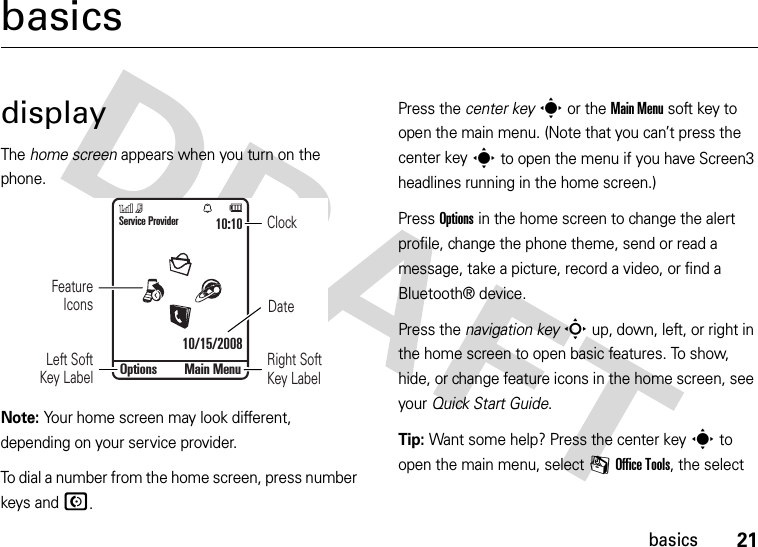
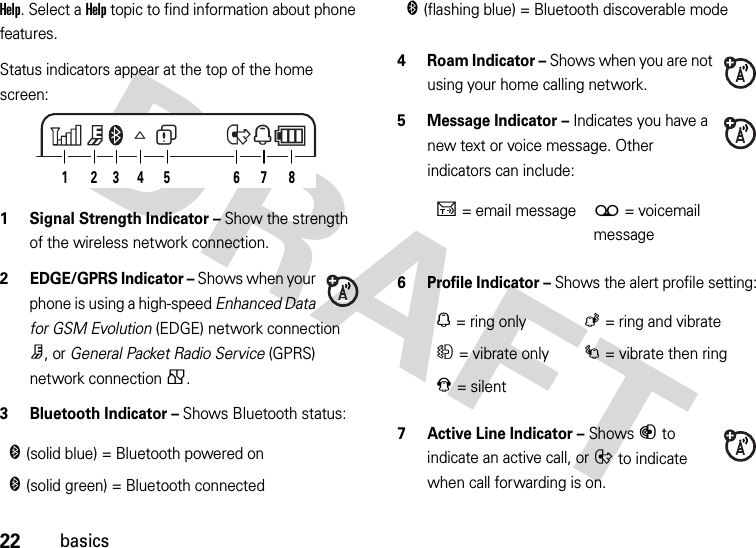
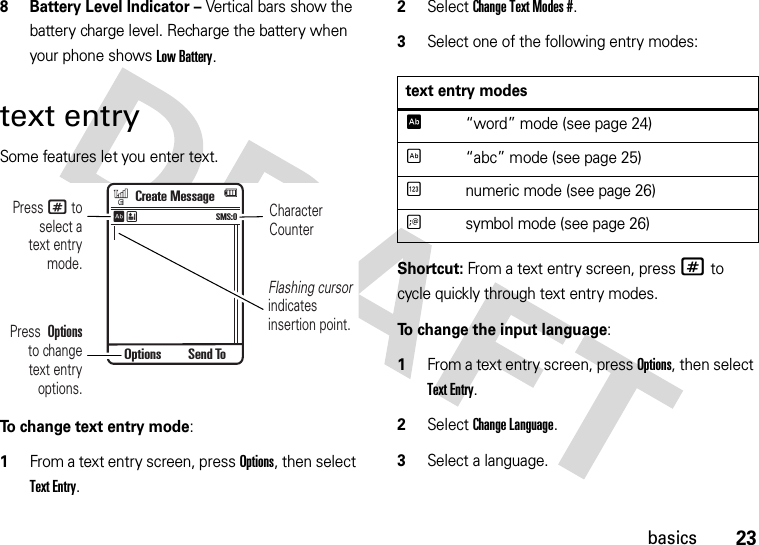
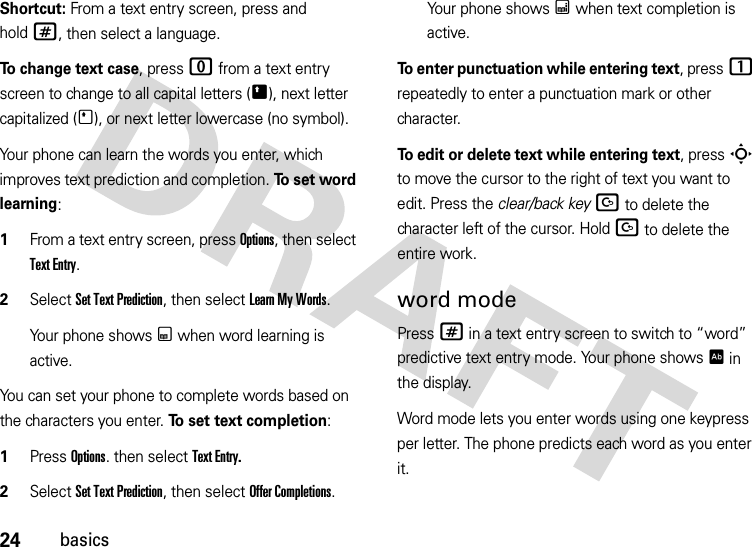
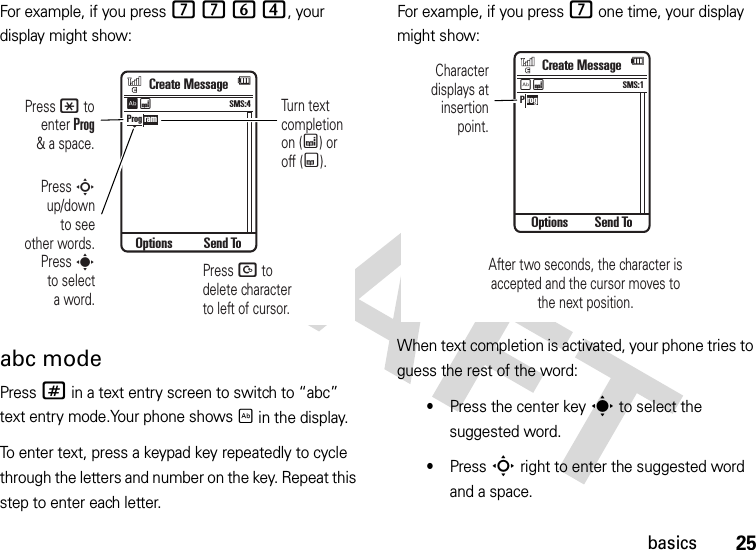
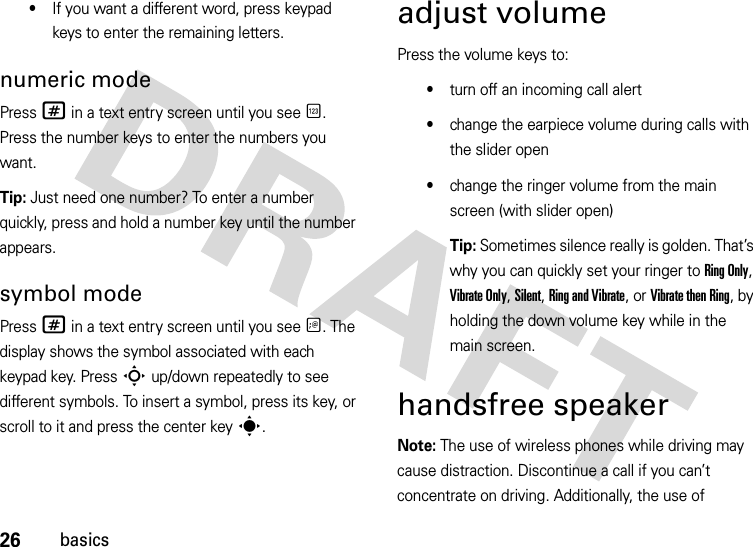
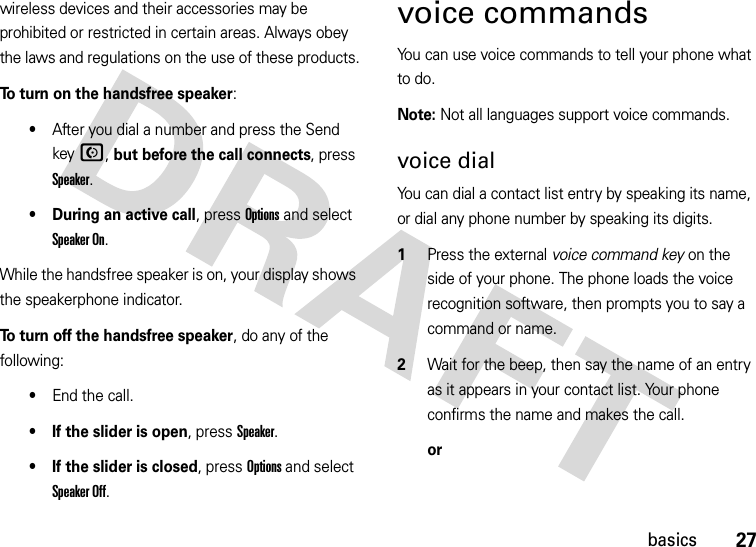
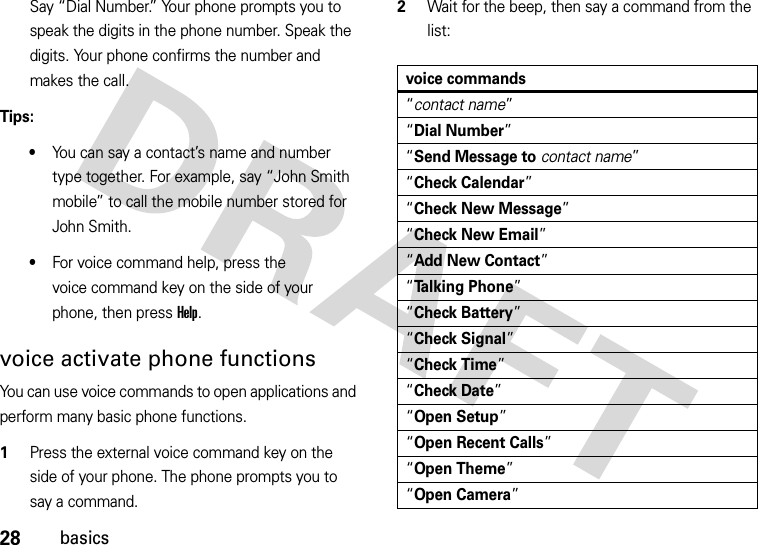
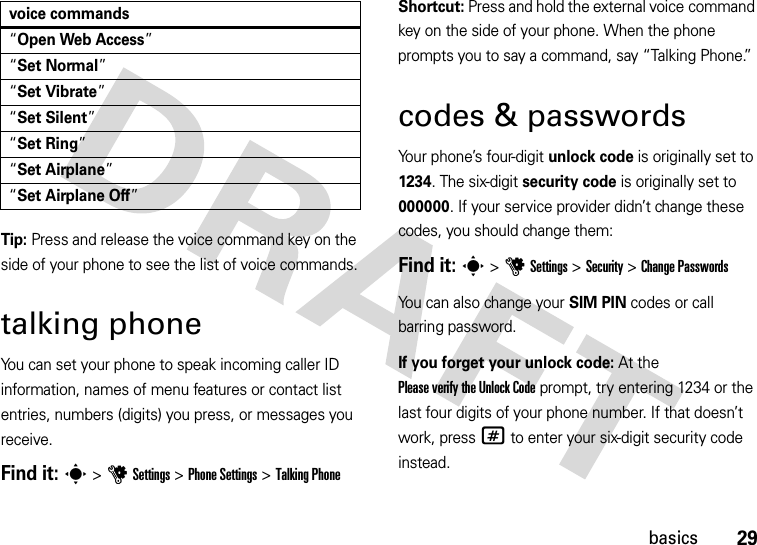
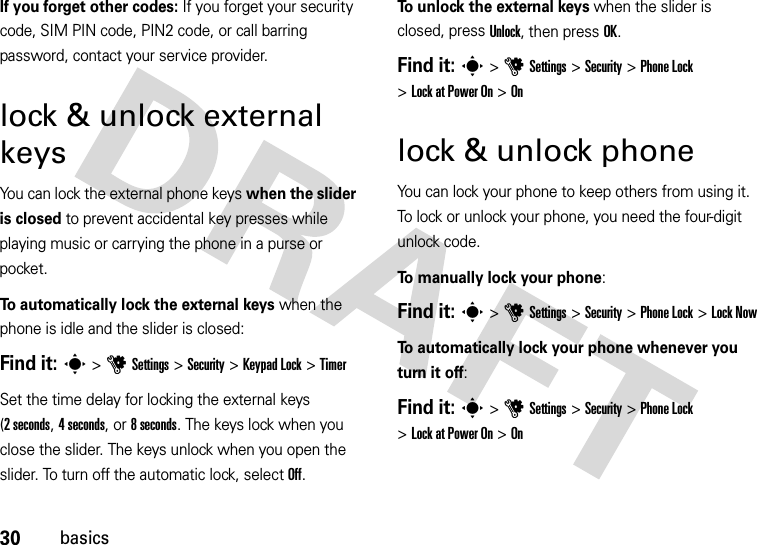
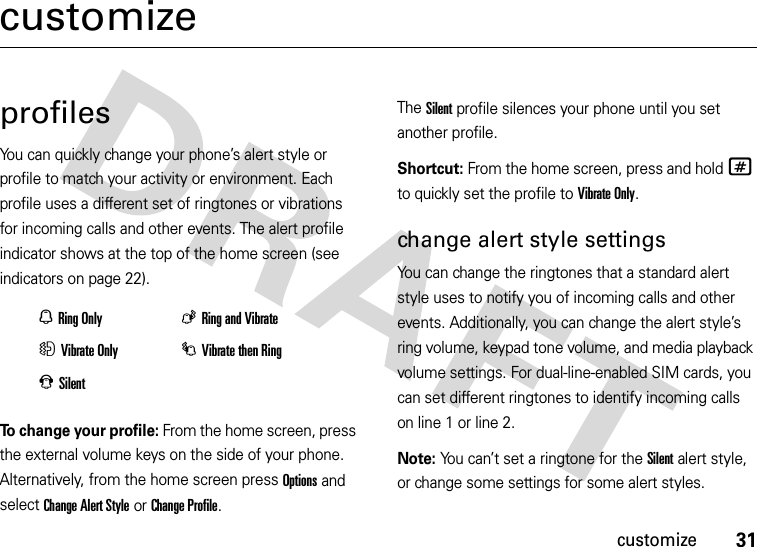
![32customizeFind it: s >uSettings >Profiles >Alert Style >alert style 1Press S left/right to select the alerts tab[, volume tabi, messages tab], or settings tab#.2Press S up/down to scroll to the alert or volume setting you want to change, then press the center keys.3Select the setting value you want.4Press Back to exit and save your changes.To reset the default settings for an alert style:Find it: s >uSettings >Profiles >Alert Style >alert stylePress Options and select Reset.create new profileTo create a new profile with the ringtones and volume settings you specify:Find it: s >uSettings >Profiles >Alert Style >alert style 1Change alert style settings as described in the previous section.2Press Options and select Save asProfile.3Enter a name for the profile, then press Save to save it.Note: Profile alert settings also can be set by the theme. When you apply a new theme, you can choose to apply the theme’s alert settings to the current profile. Selecting this option changes the current profile to use the theme alert settings.](https://usermanual.wiki/Motorola-Mobility/P56HH2.Exhibit-8-Users-Manual/User-Guide-856740-Page-37.png)
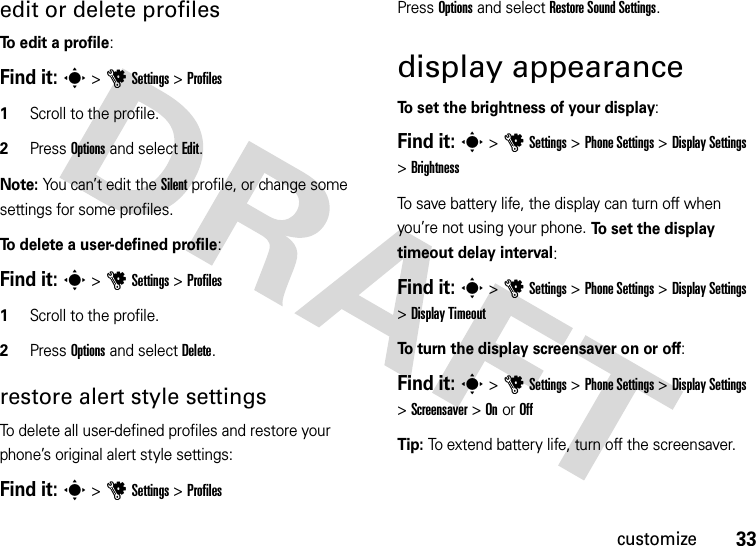
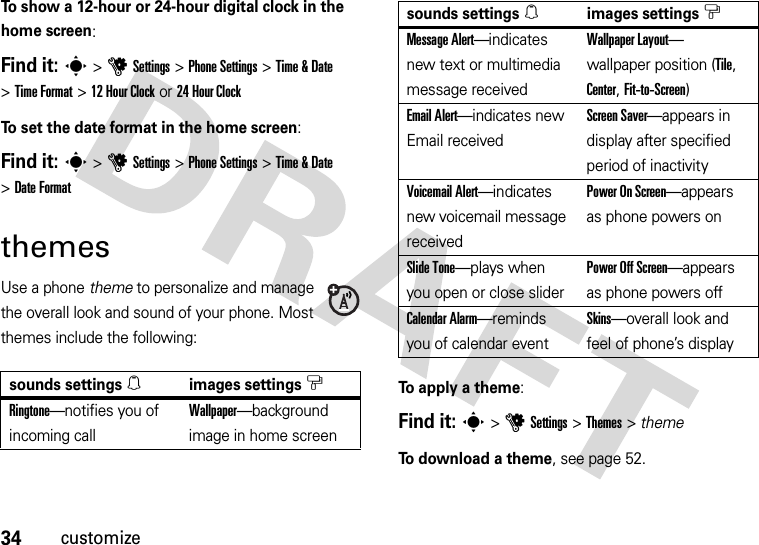
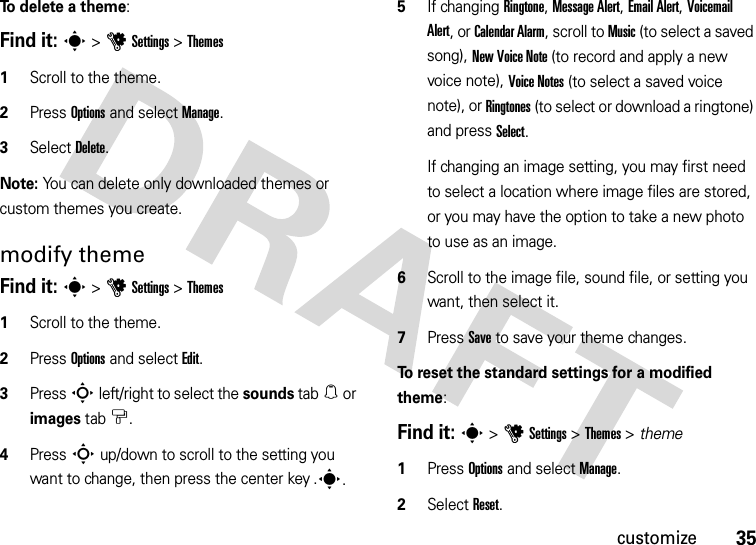
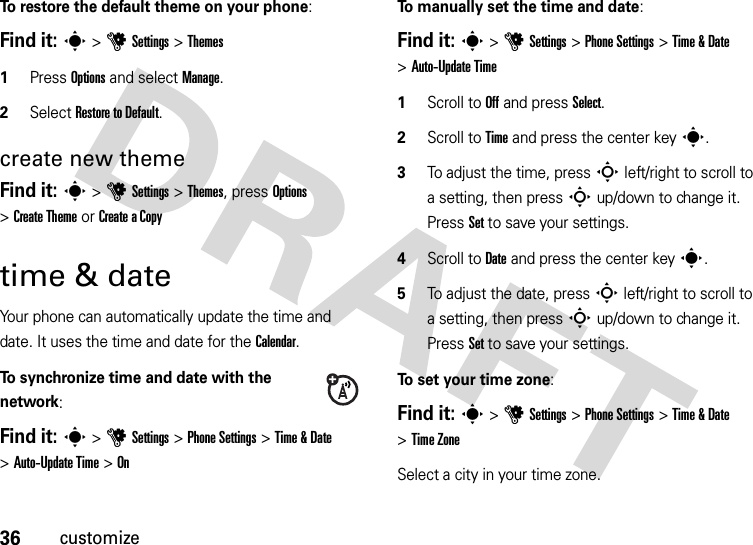
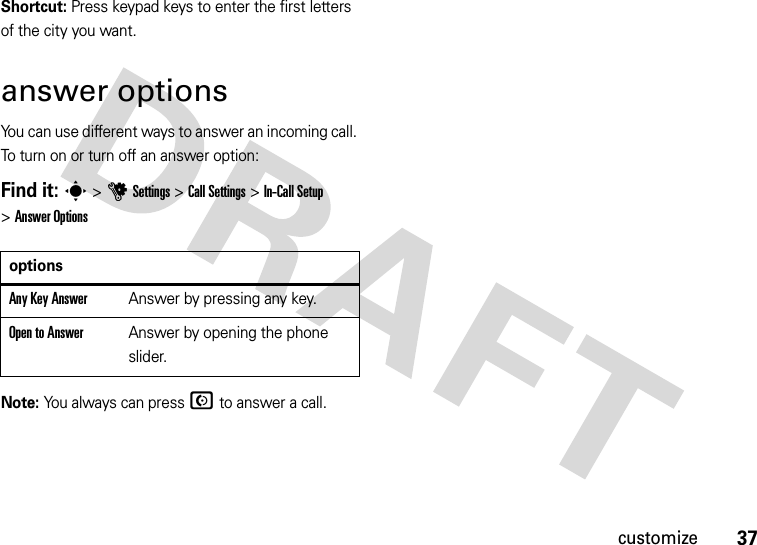
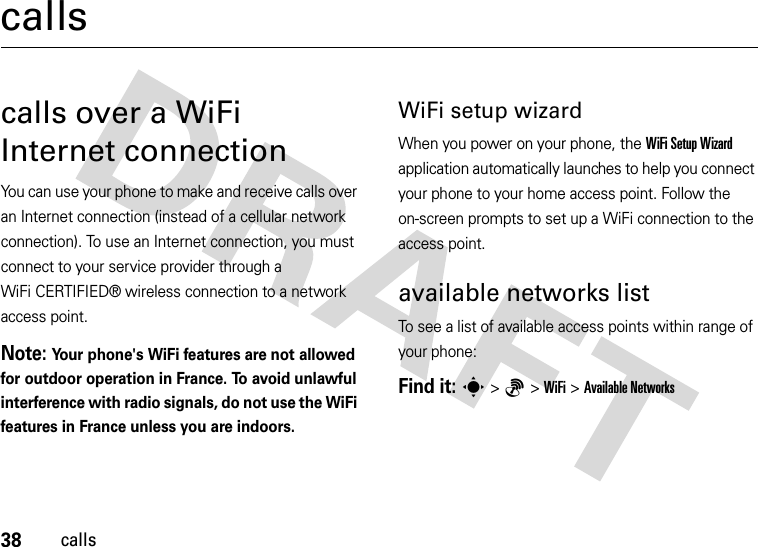
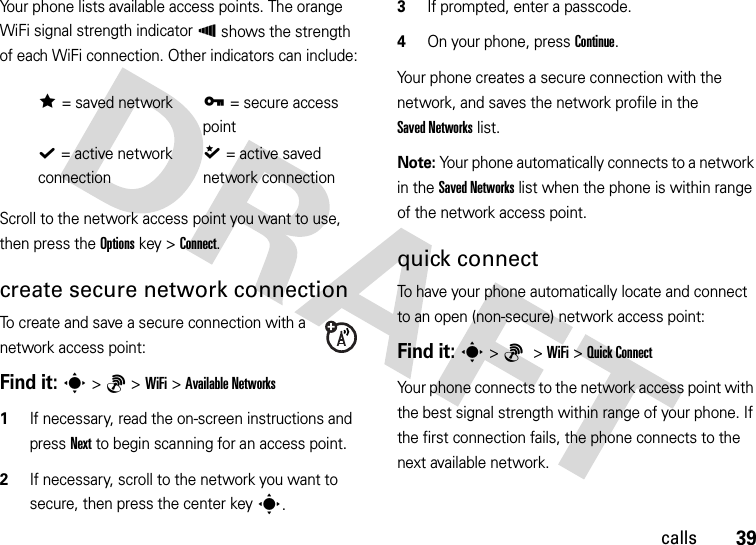
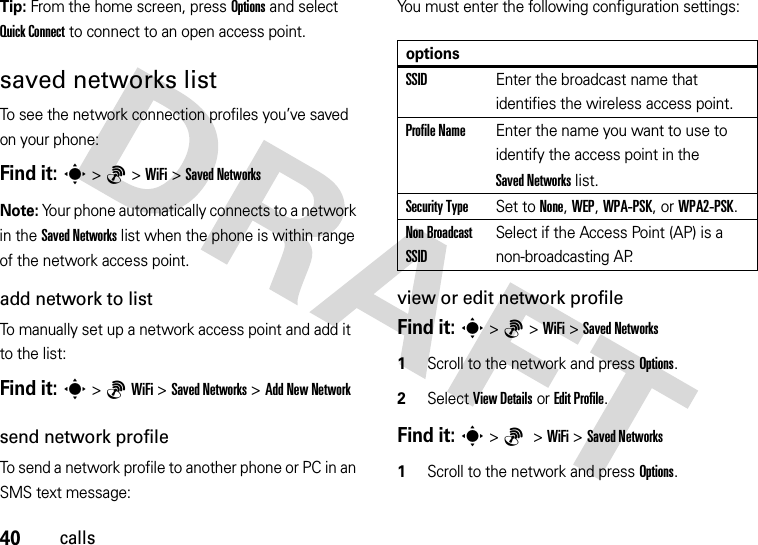
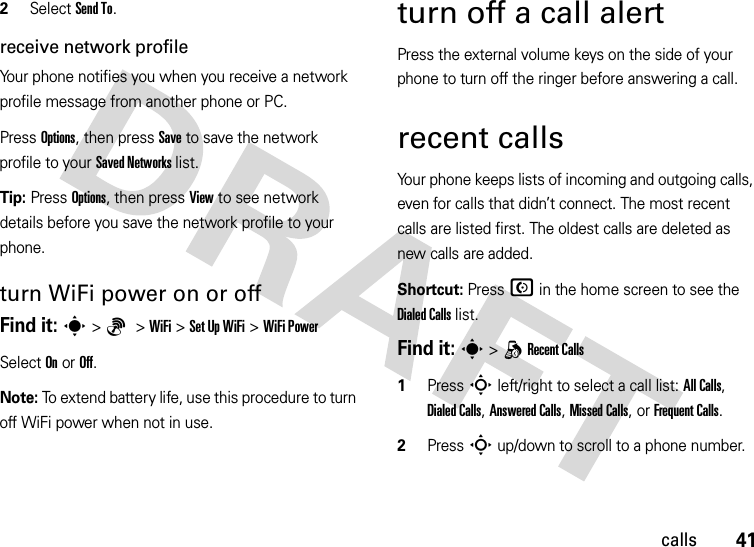
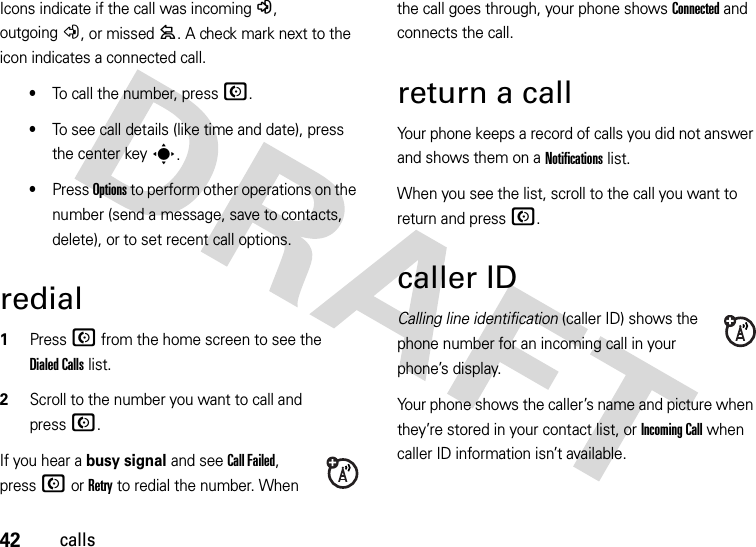
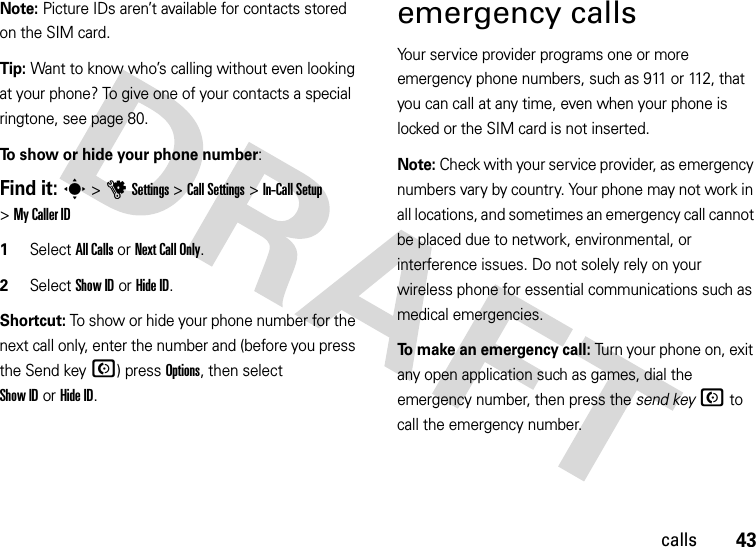
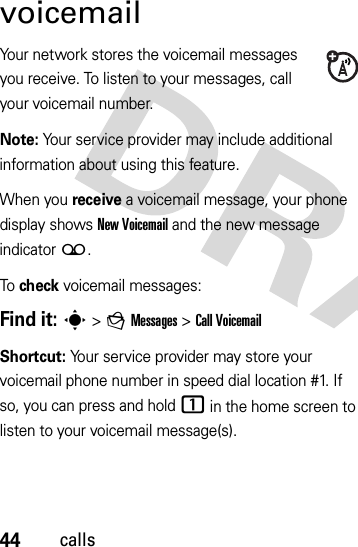
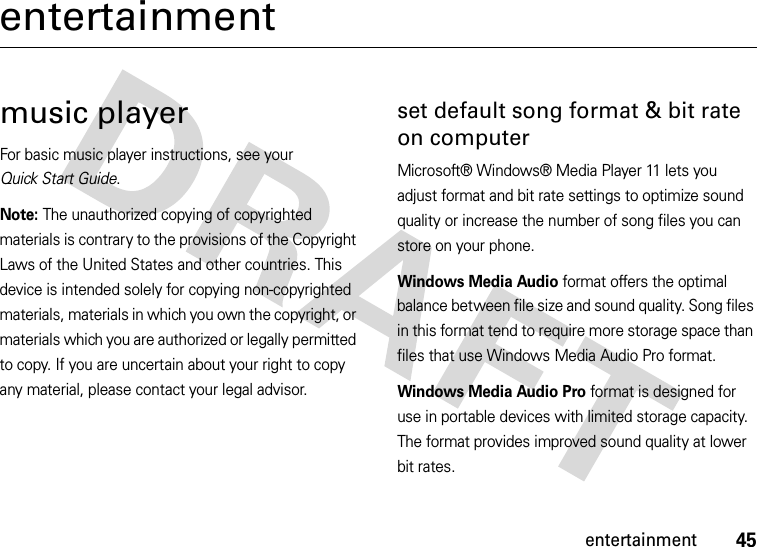
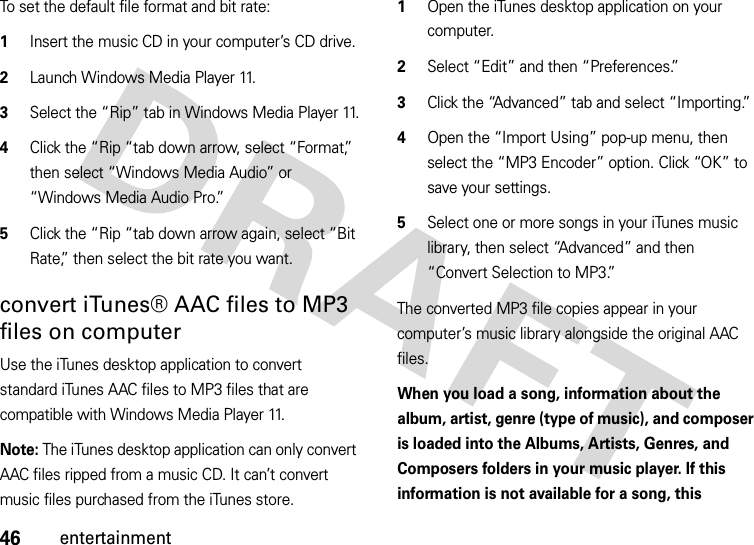
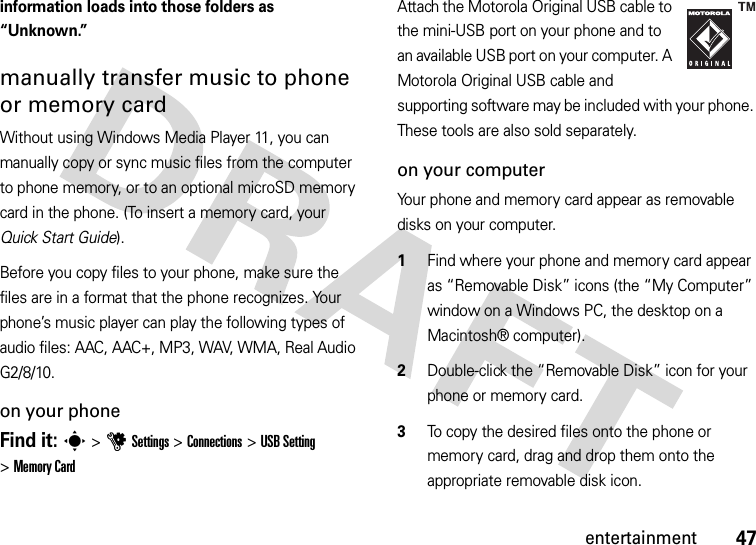
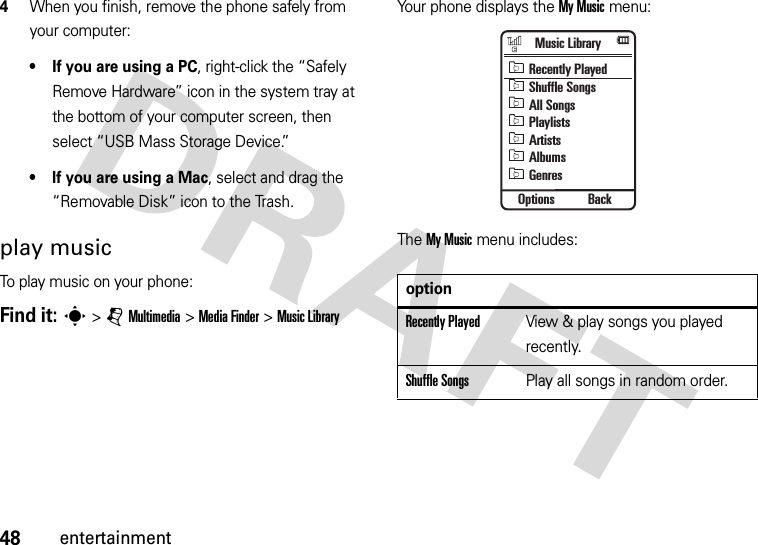
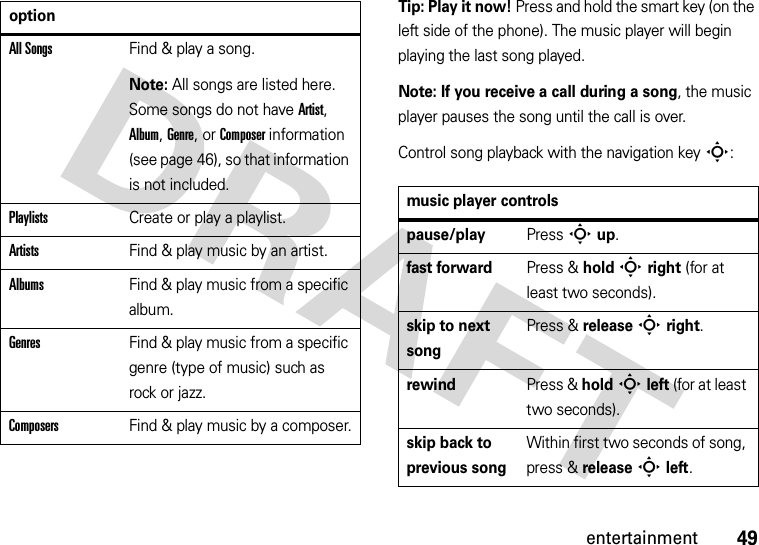
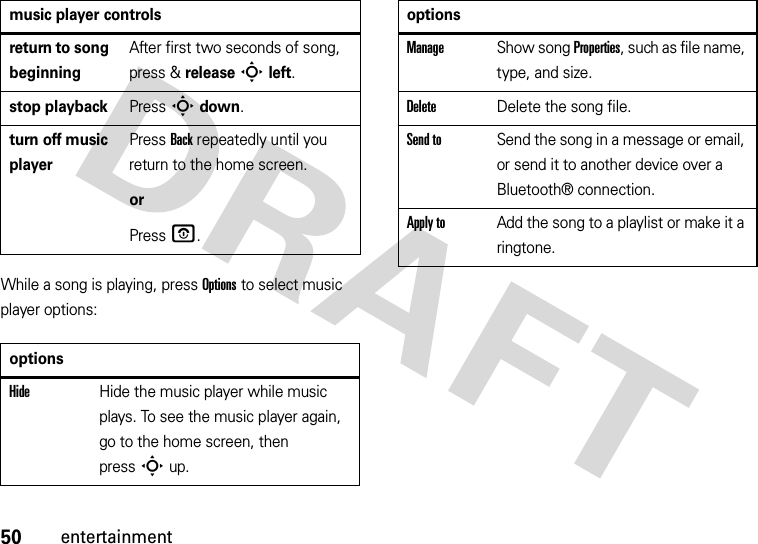
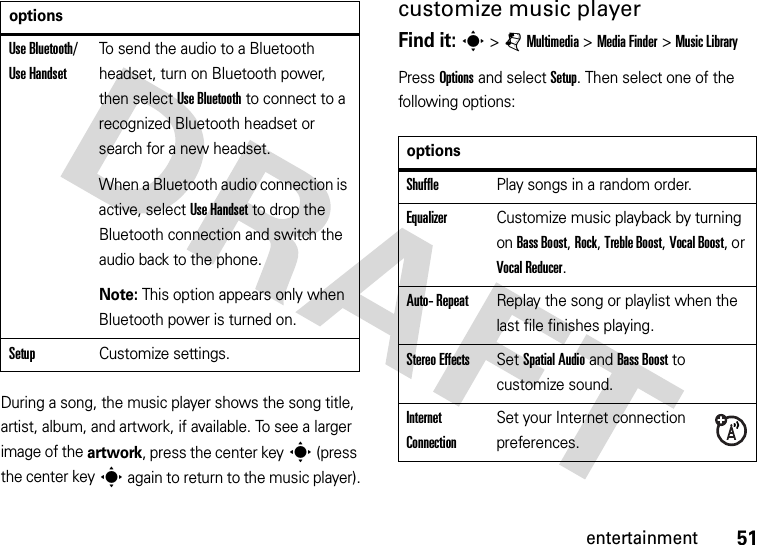
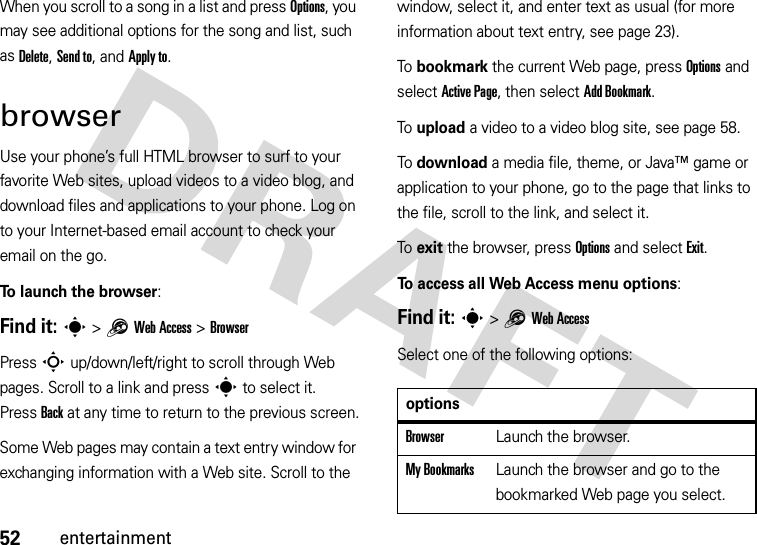
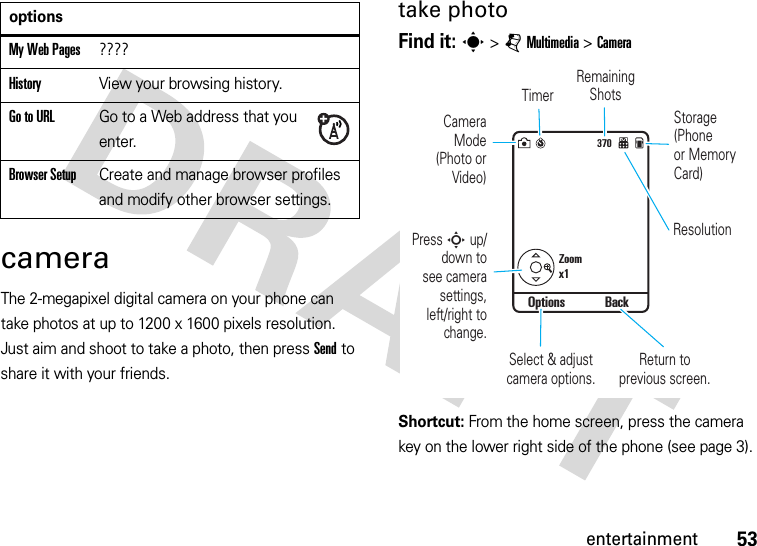
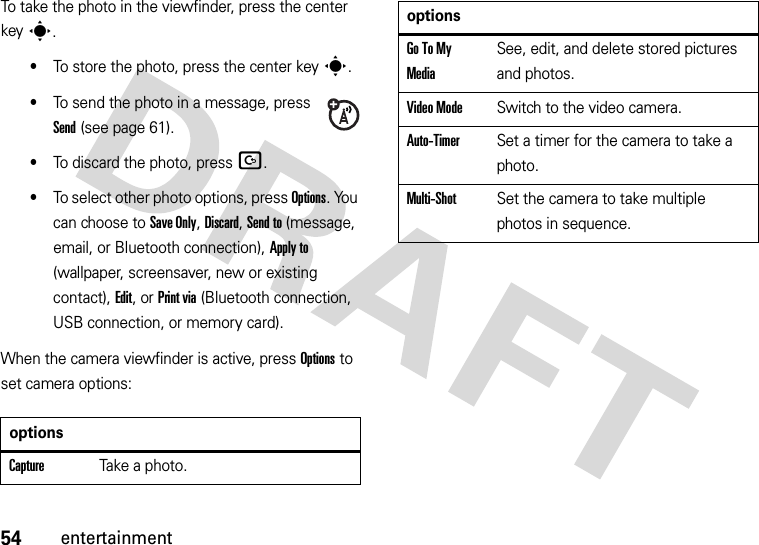
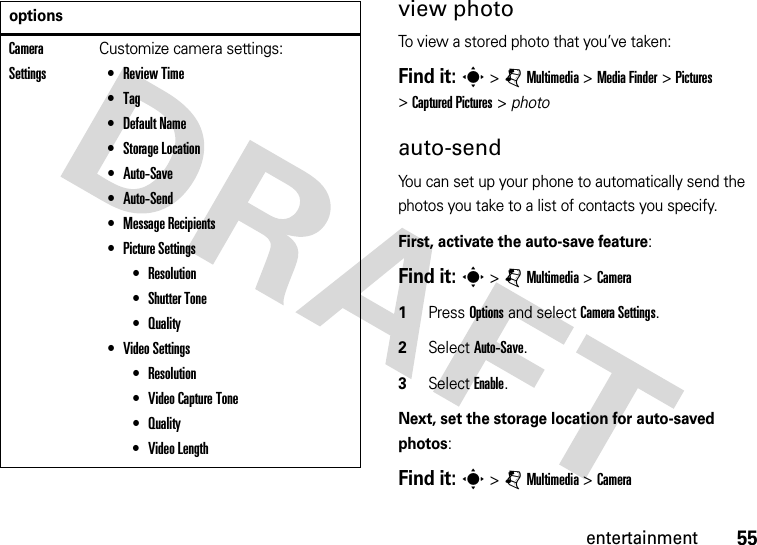
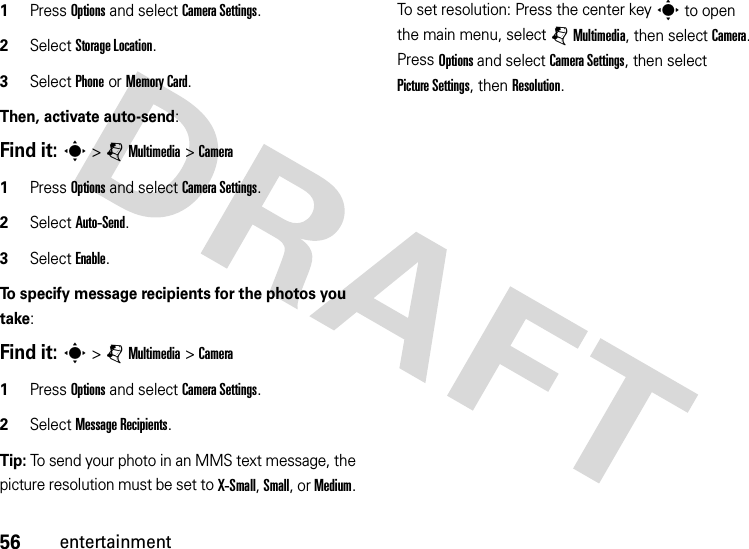
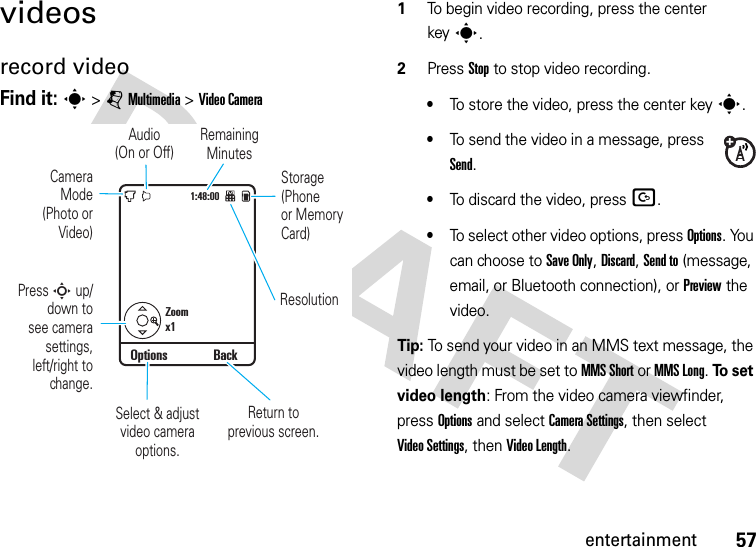
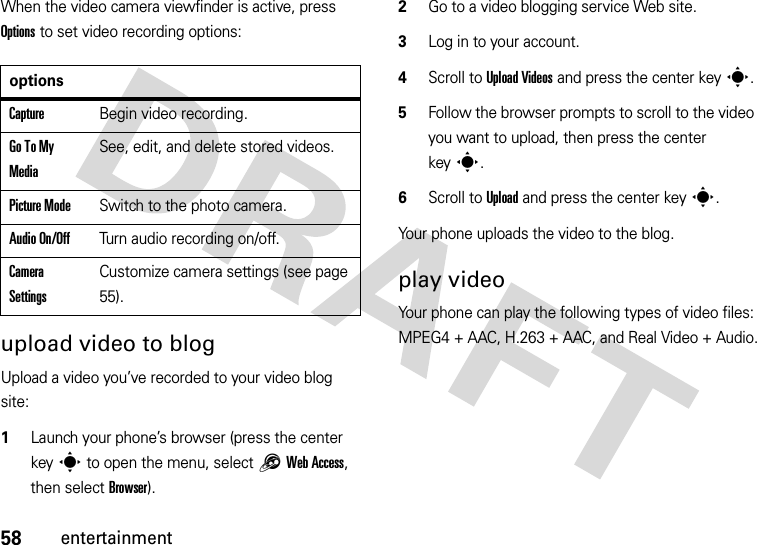
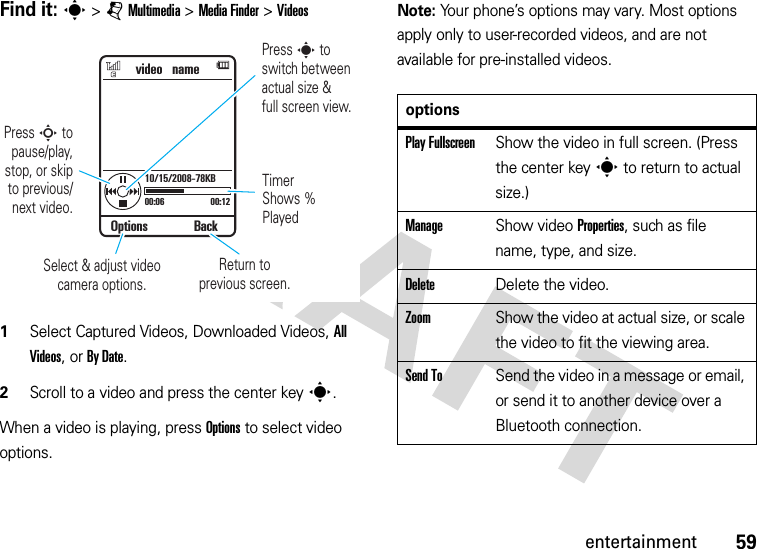
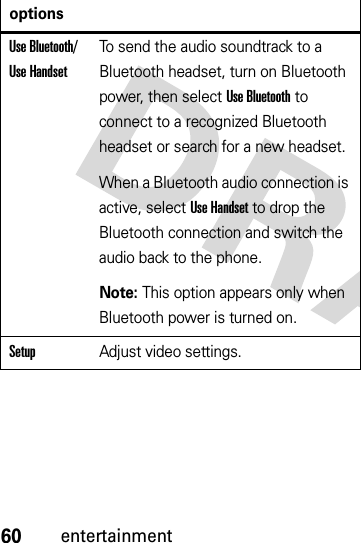
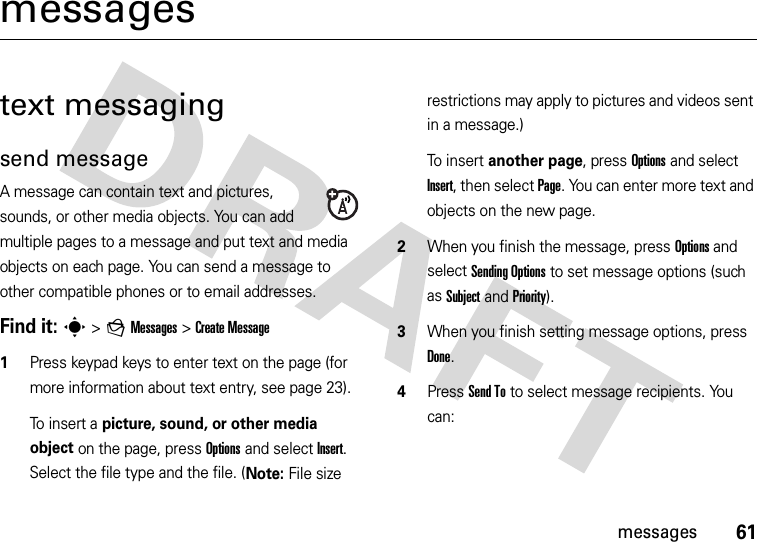
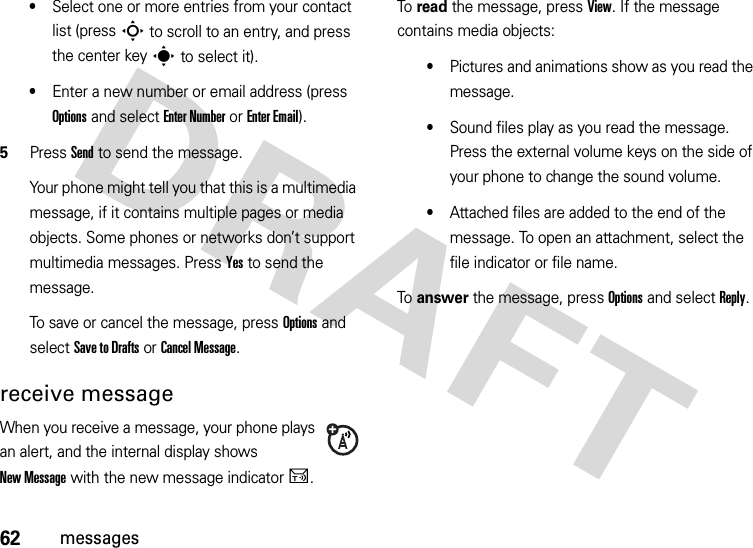
![63messagesadvanced message & email featuresfeaturessend a prewritten text templates >gMessages >Templates >Text Templates >text templatePress Options and select Send.set up email accountsYou can set up and use multiple email accounts on your phone:s >gMessages >Email >Add AccountNote: Your display shows a separate folder for each email account.send emails >gMessages >Emailuse a multimedia templateOpen a multimedia template with pre-installed media:s >gMessages >Templates >MM Templatesread new message or emailWhen your display shows New Message, press Read.read old messagess >gMessages >InboxAn icon beside each message shows if it is read>, unread], urgent<, or has an attachment*. Press Options to perform more actions on a message.read old emails >gMessages >EmailPress Options to perform more actions on a message.features](https://usermanual.wiki/Motorola-Mobility/P56HH2.Exhibit-8-Users-Manual/User-Guide-856740-Page-68.png)
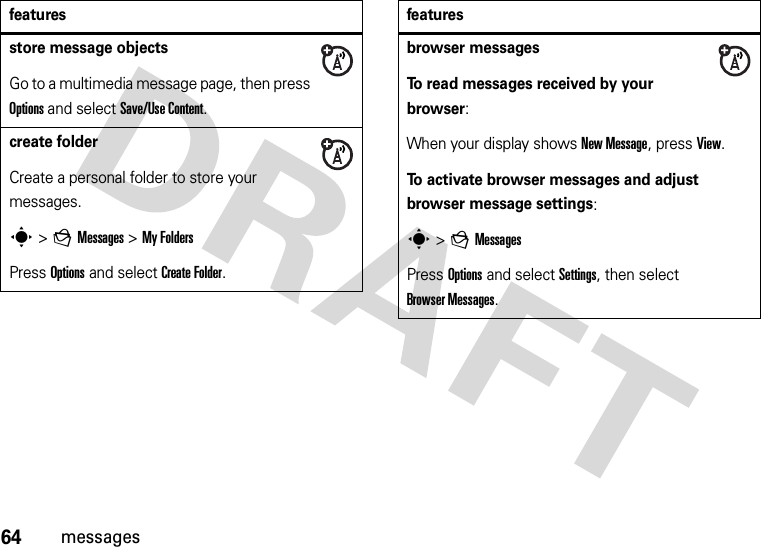
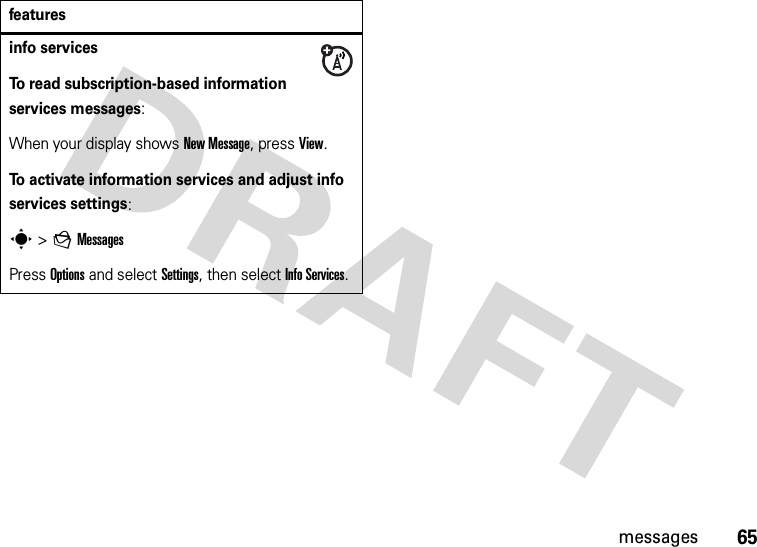
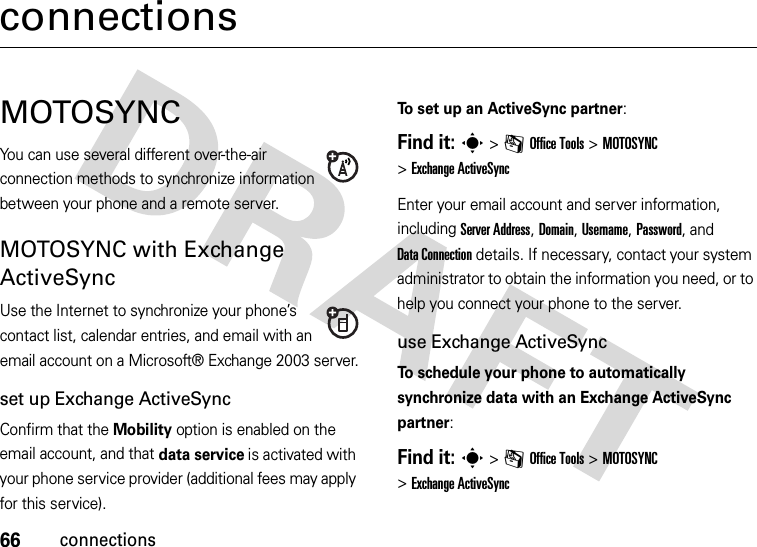
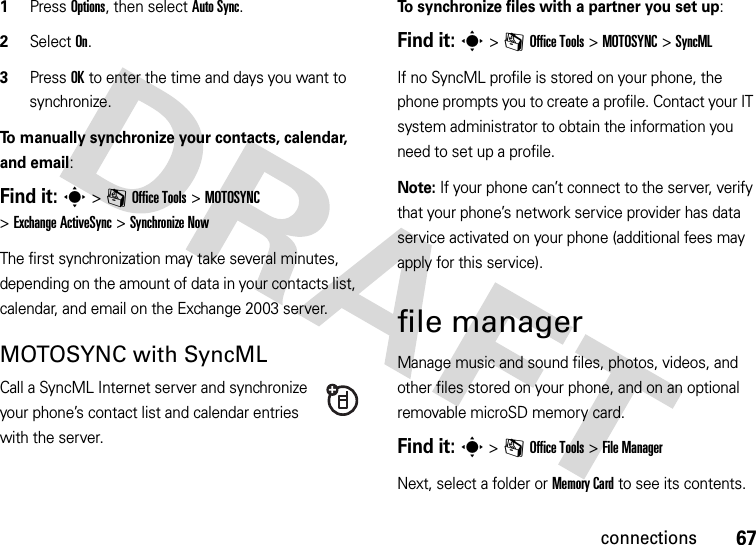
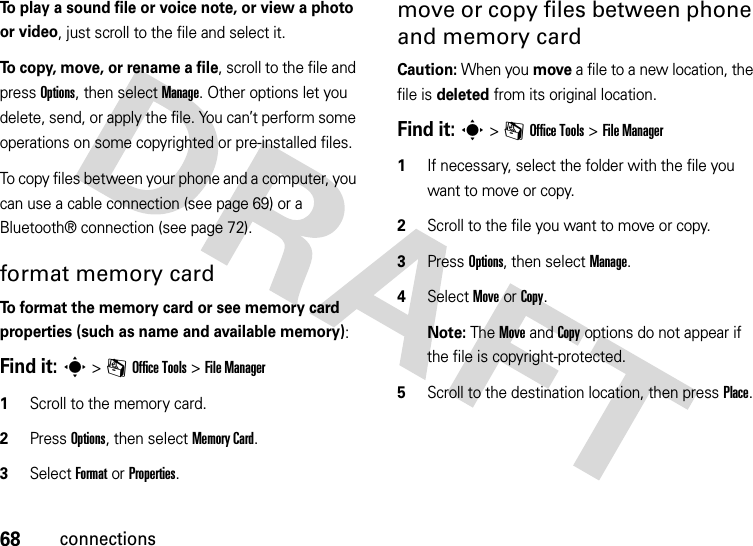
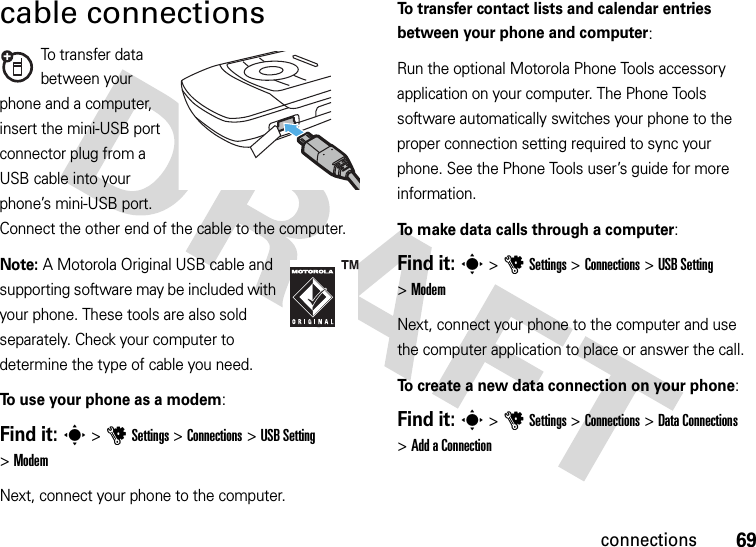
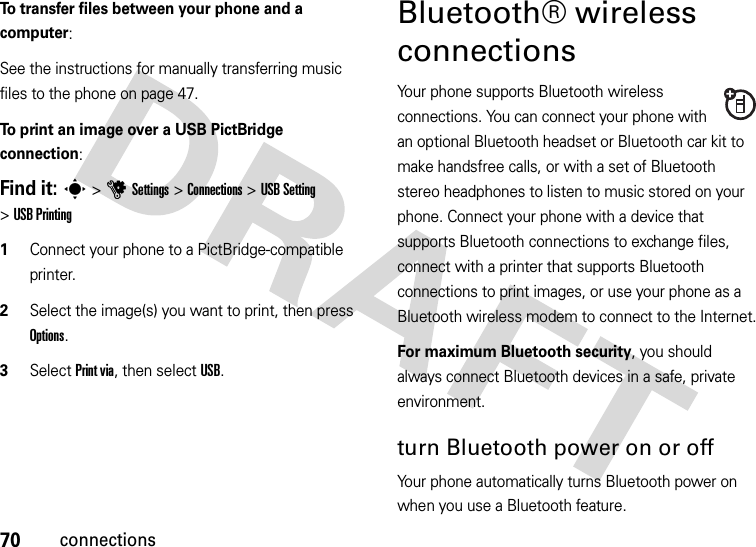
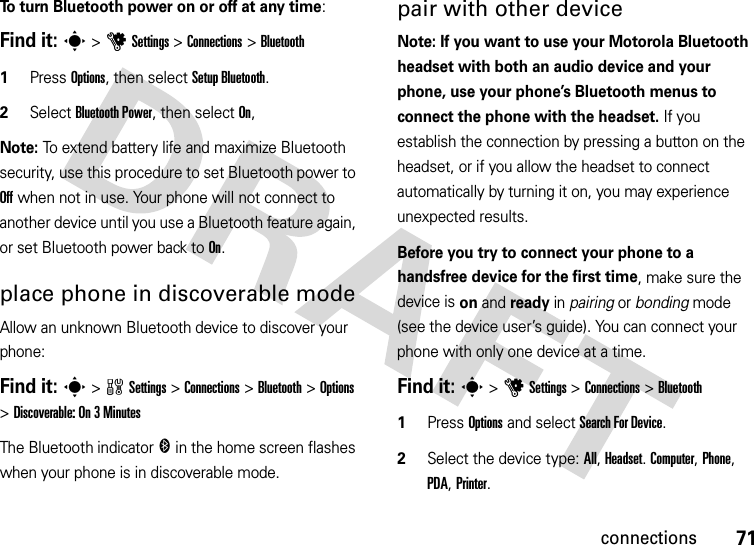
![72connectionsYour phone lists the Bluetooth devices it finds within range.3Scroll to a device in the list.4Press the center keys to connect with the highlighted device.5If necessary, enter a mutually agreed upon passkey (such as 0000) on your phone and the device, then press OK to connect to the device.copy files to another deviceYou can copy a media file, contact, calendar event, or bookmark to another phone or computer that supports Bluetooth connections.Note: You can’t copy some copyrighted objects.Before you try to copy a file to another device, make sure the receiving device is on and ready in discoverable mode. Also, make sure the device is not busy with another Bluetooth connection. 1Pair with the other device (see page 71).2On your phone, scroll to the object that you want to copy to the other device.3Press Options, then:•For an image or sound file, select Send To, then select Bluetooth.•For a contact, select Share, select the contact, then select Bluetooth.•For a calendar event or bookmark, select Share Via, then select Bluetooth.4Select a recognized device name.orSelect [Search For Devices] to search for new devices, then select the device where you want to copy the object.5Press Options, then select Send.](https://usermanual.wiki/Motorola-Mobility/P56HH2.Exhibit-8-Users-Manual/User-Guide-856740-Page-77.png)
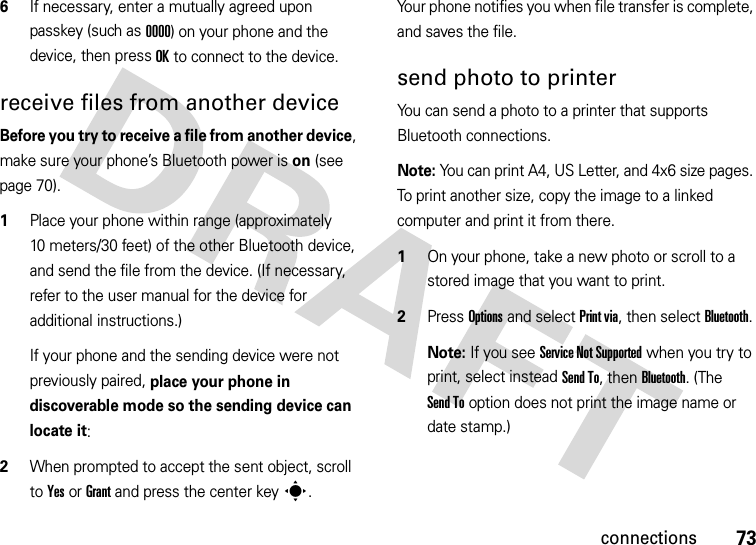
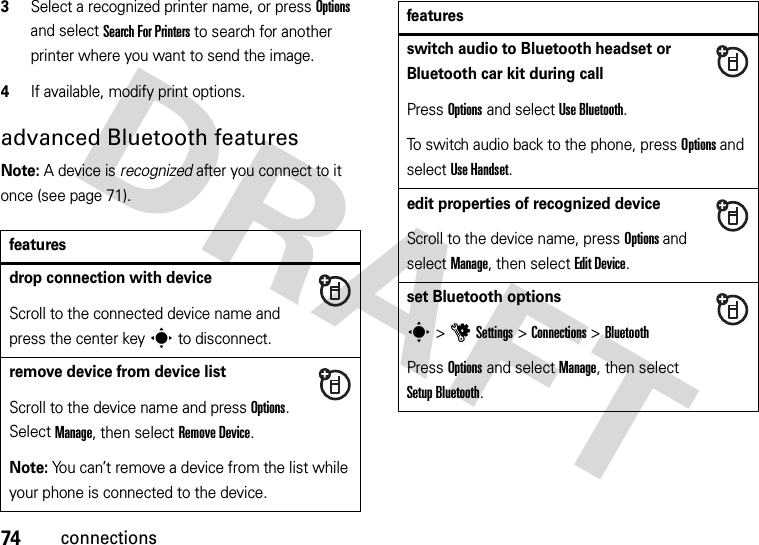
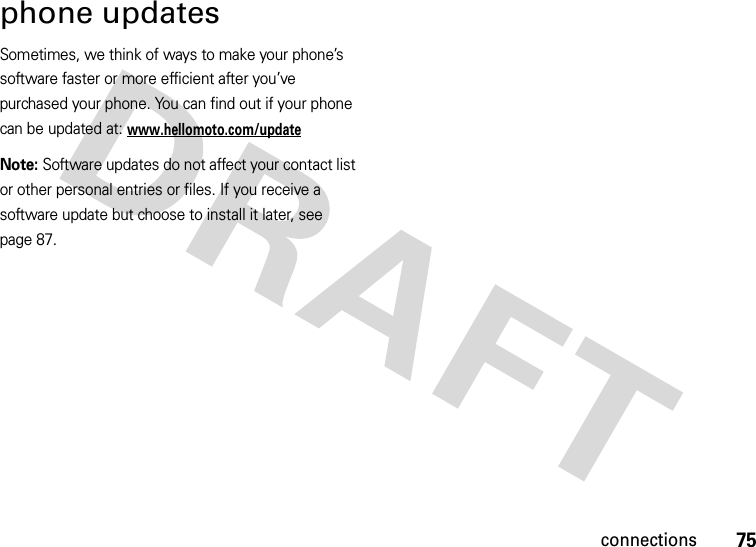
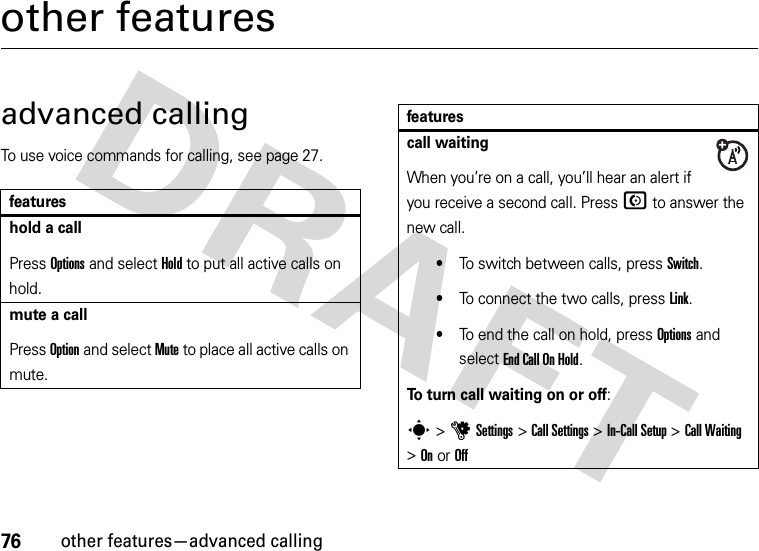
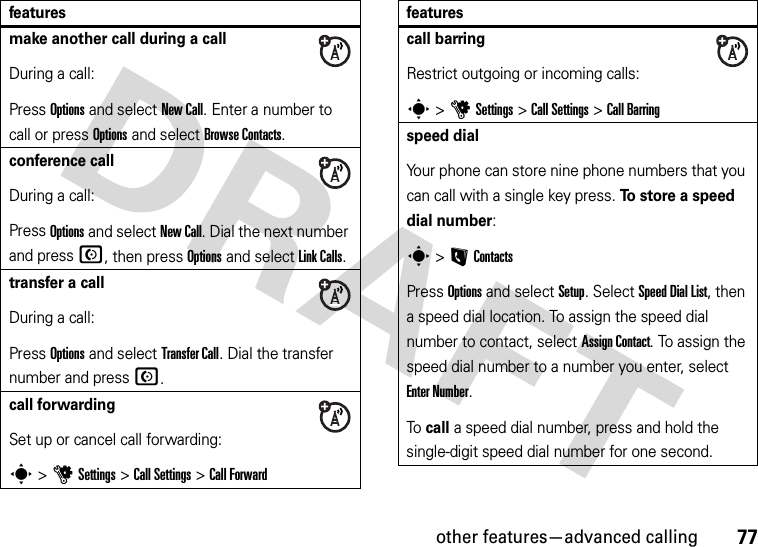
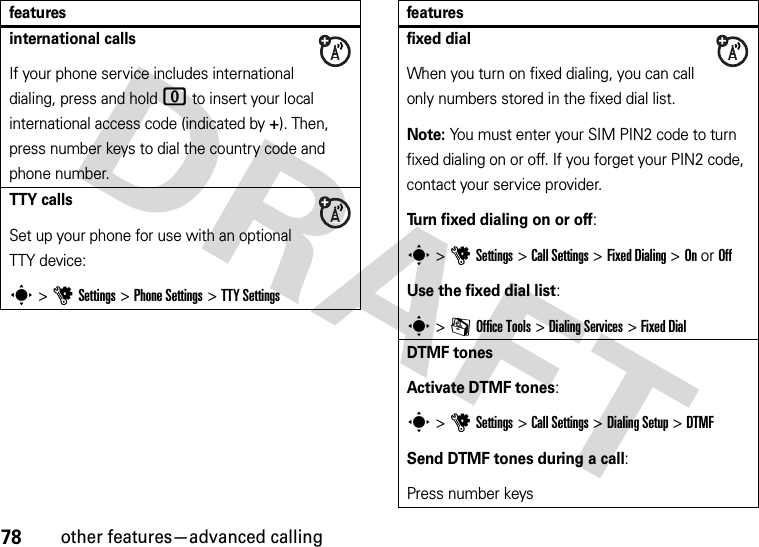
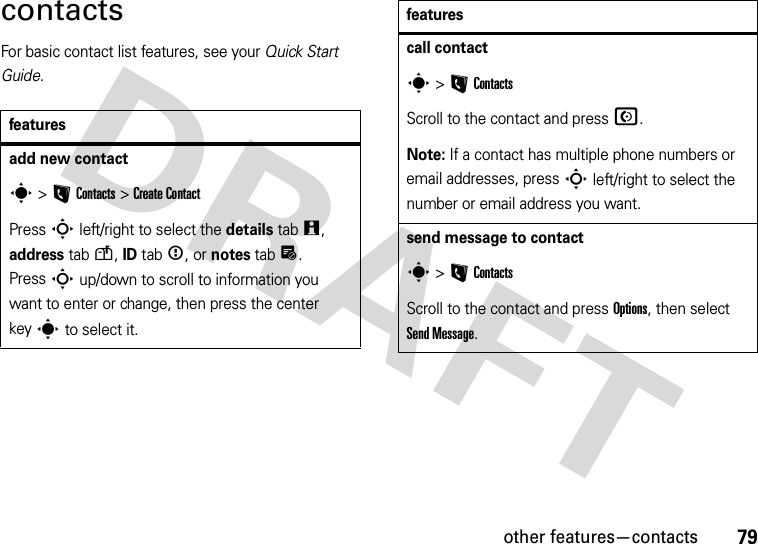
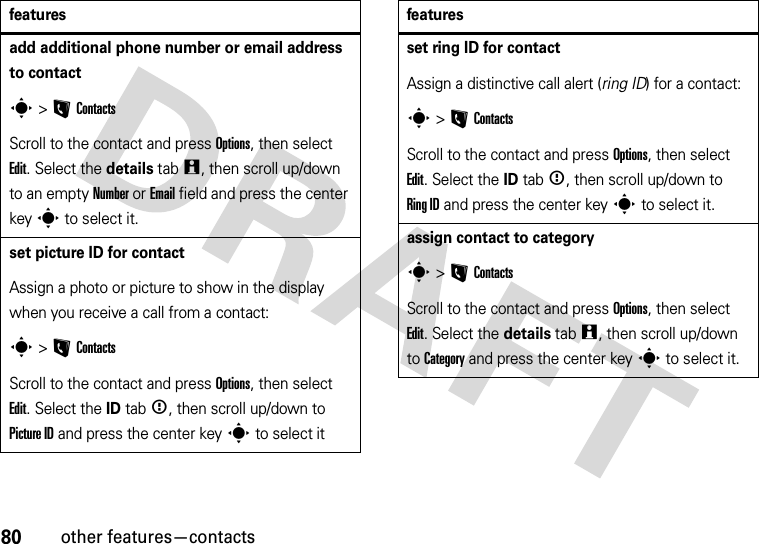
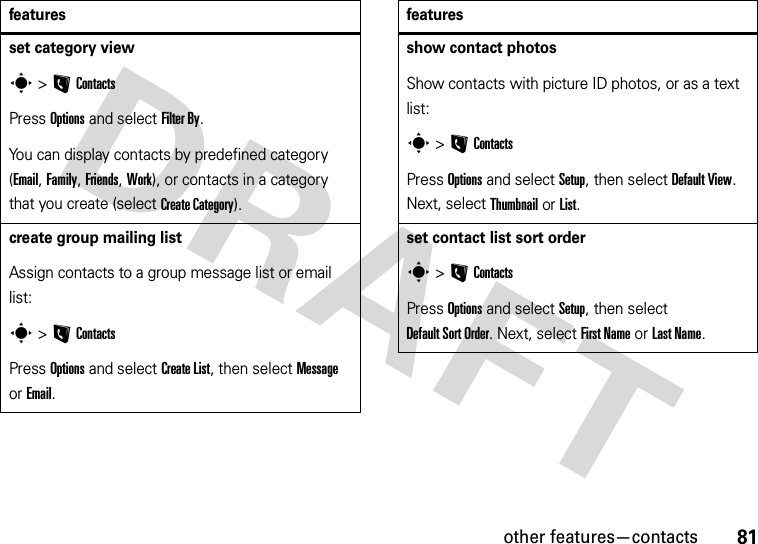
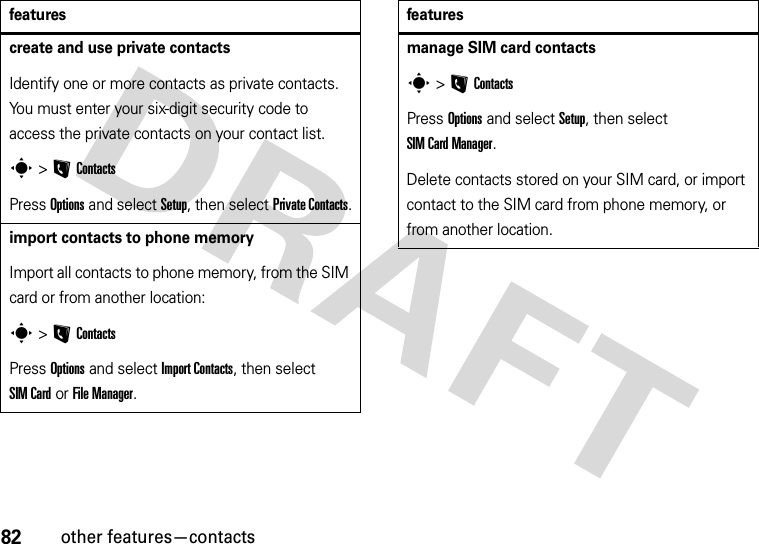
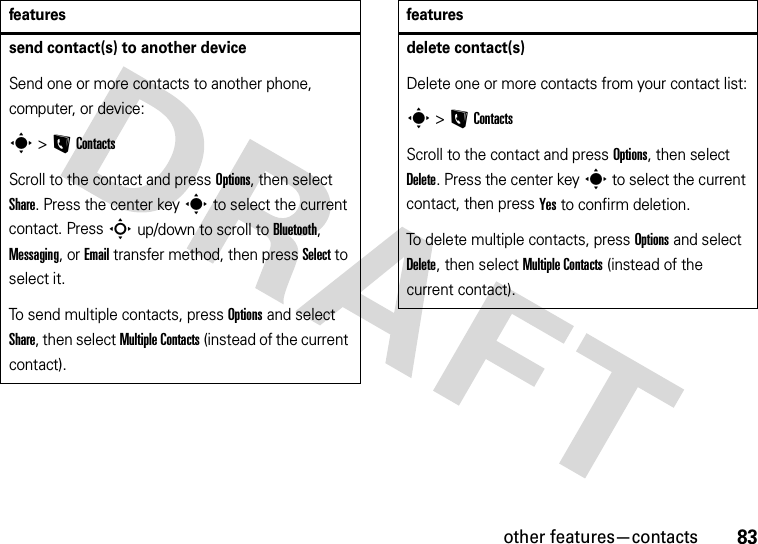
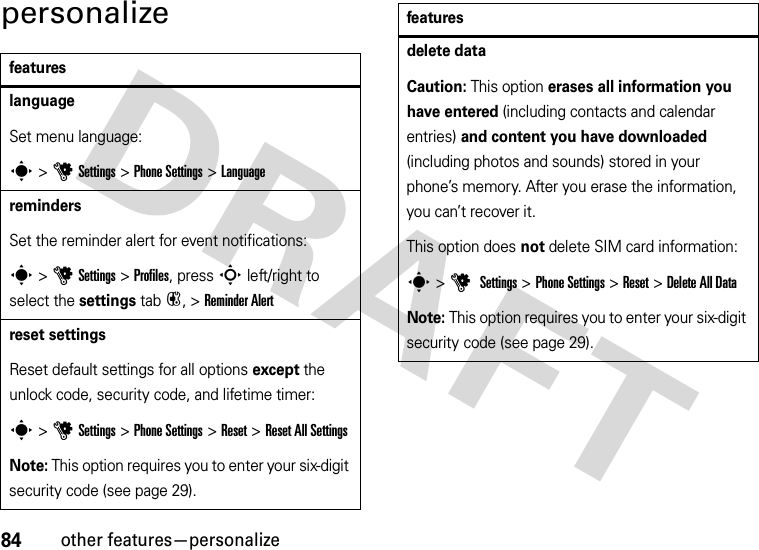
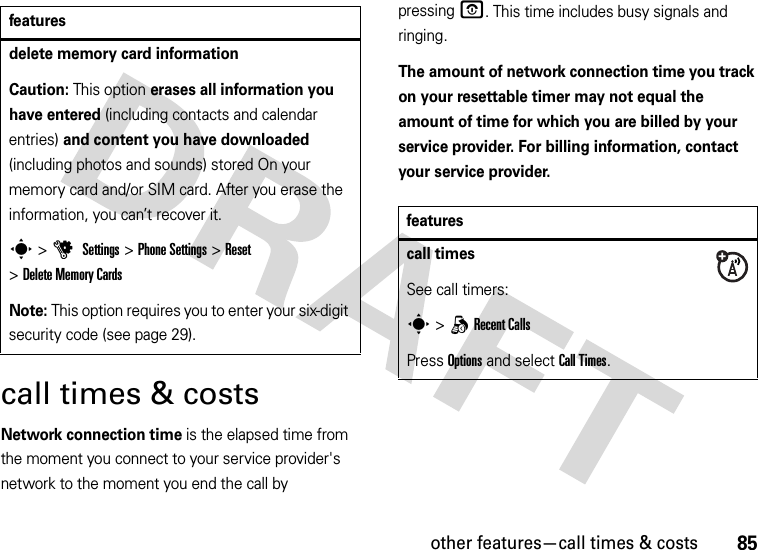
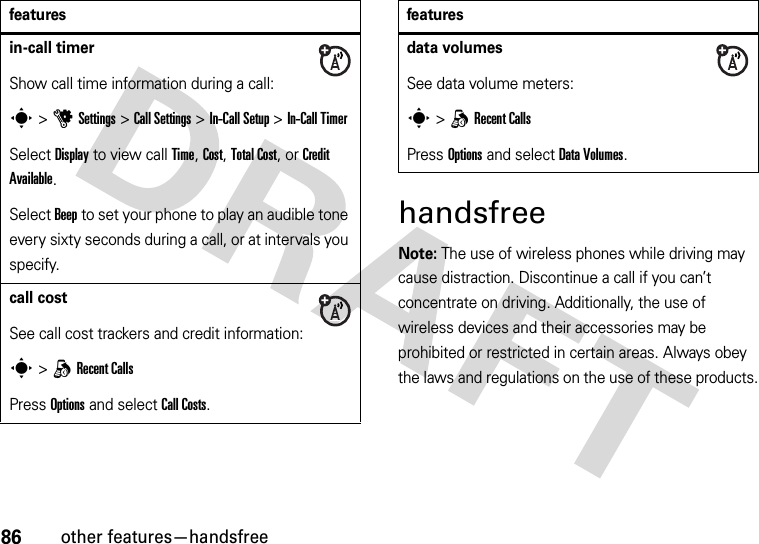
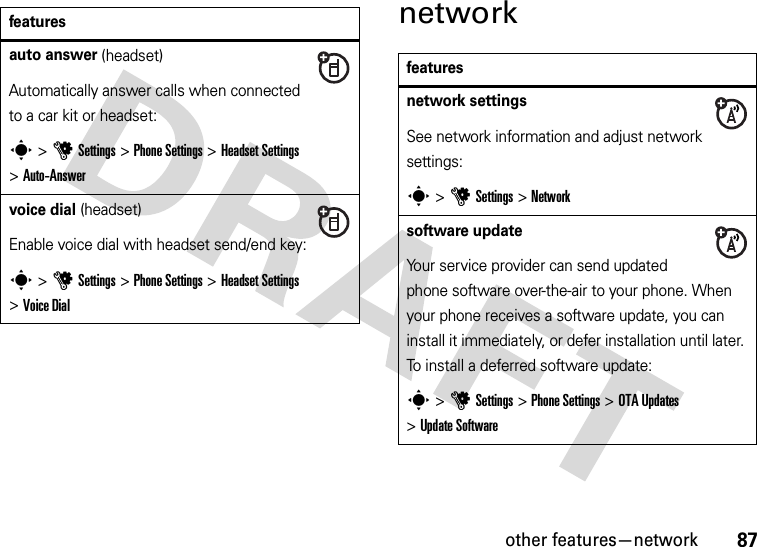
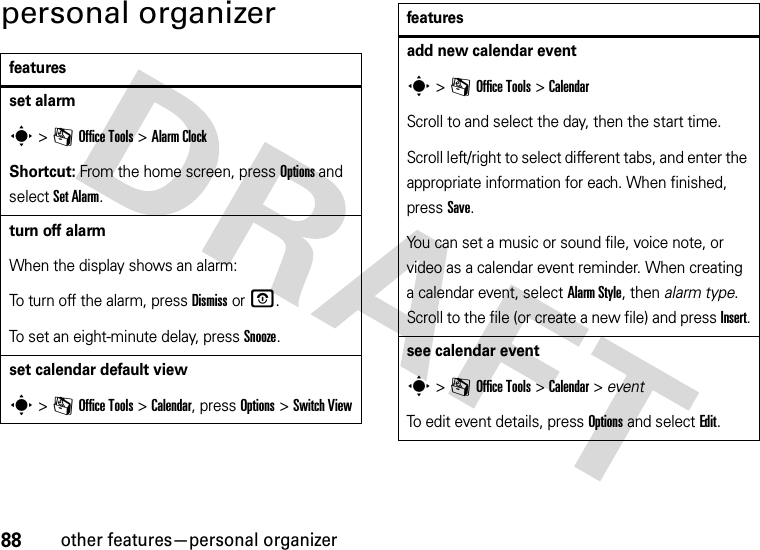
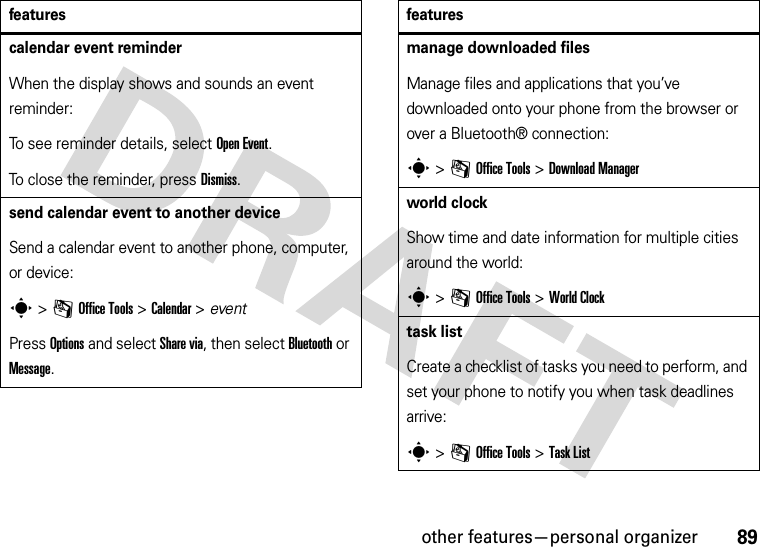
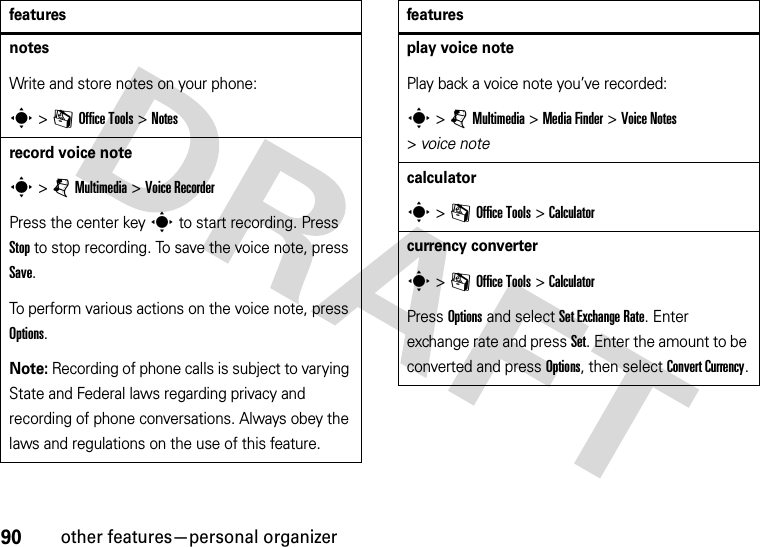
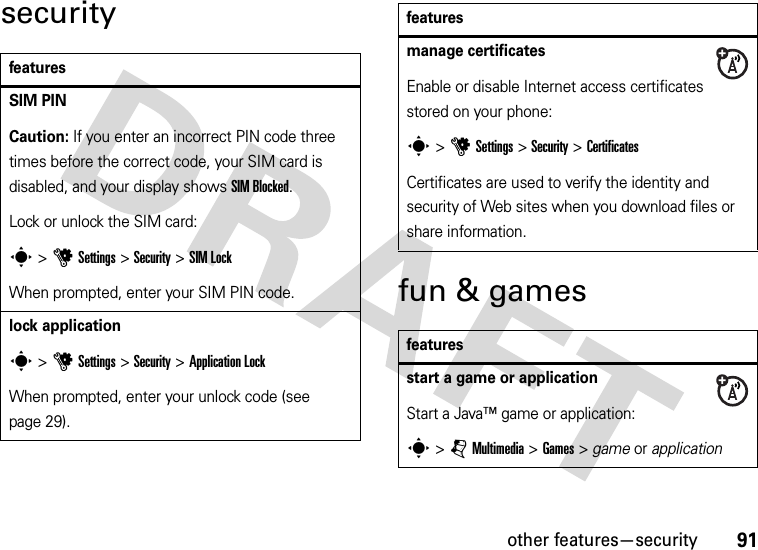
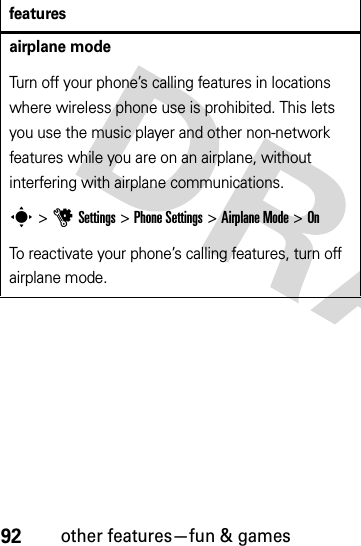
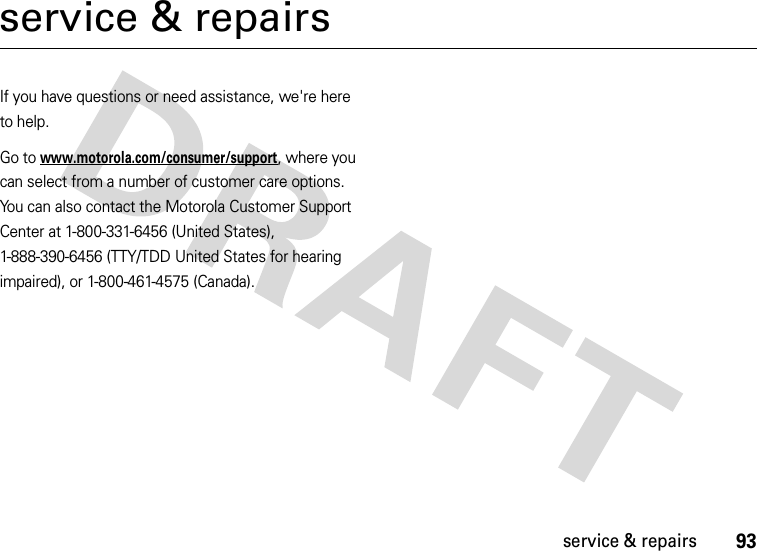
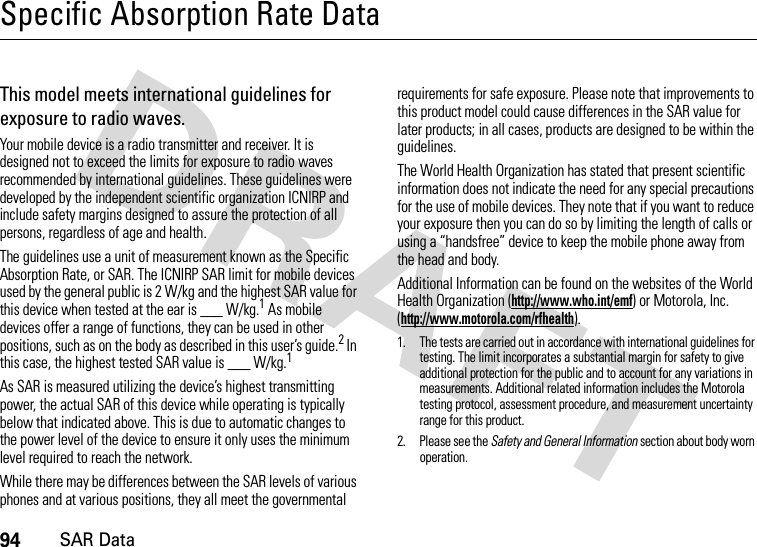
![EU Conformance95European Union Directives Conformance StatementEU ConformanceHereby, Motorola declares that this product is in compliance with:•The essential requirements and other relevant provisions of Directive 1999/5/EC•All other relevant EU DirectivesThe above gives an example of a typical Product Approval Number.You can view your product’s Declaration of Conformity (DoC) to Directive 1999/5/EC (to R&TTE Directive) at www.motorola.com/rtte. To find your DoC, enter the Product Approval Number from your product’s label in the “Search” bar on the Web site.Information from the World Health OrganizationWHO InformationPresent scientific information does not indicate the need for any special precautions for the use of mobile phones. If you are [France Only]0168 Product Approval Number](https://usermanual.wiki/Motorola-Mobility/P56HH2.Exhibit-8-Users-Manual/User-Guide-856740-Page-100.png)
